I have always wanted to go to Taiwan but couldn’t make it. Finally, I found an air ticket for less than S$300 from Singapore to Taiwan. Quickly I arranged a seven-day trip to Taiwan, including Taichung, Nantou, Hualien, Yilan, and Taipei.
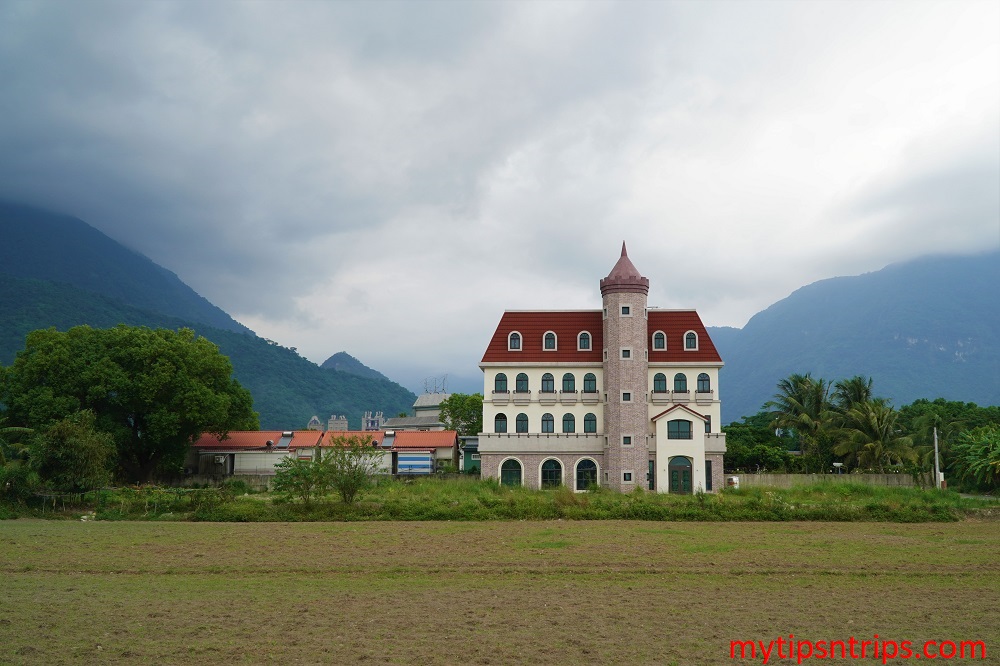
Day 1 Taichung
We arranged for a driver to pick us up at Taiyuan airport around seven o’clock, we pick up some soy milk and Youtiao for breakfast along the way and immediately got on the road. It took almost one and a half hours to reach Taichung. Today’s itinerary is to take photos at the majority of check-in locations in Taichung.
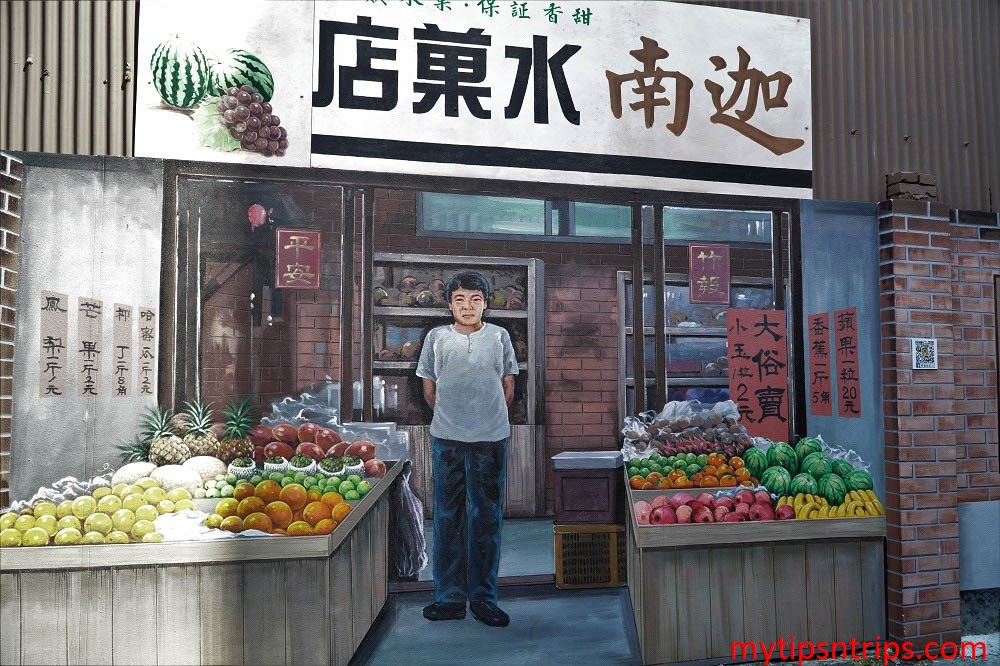
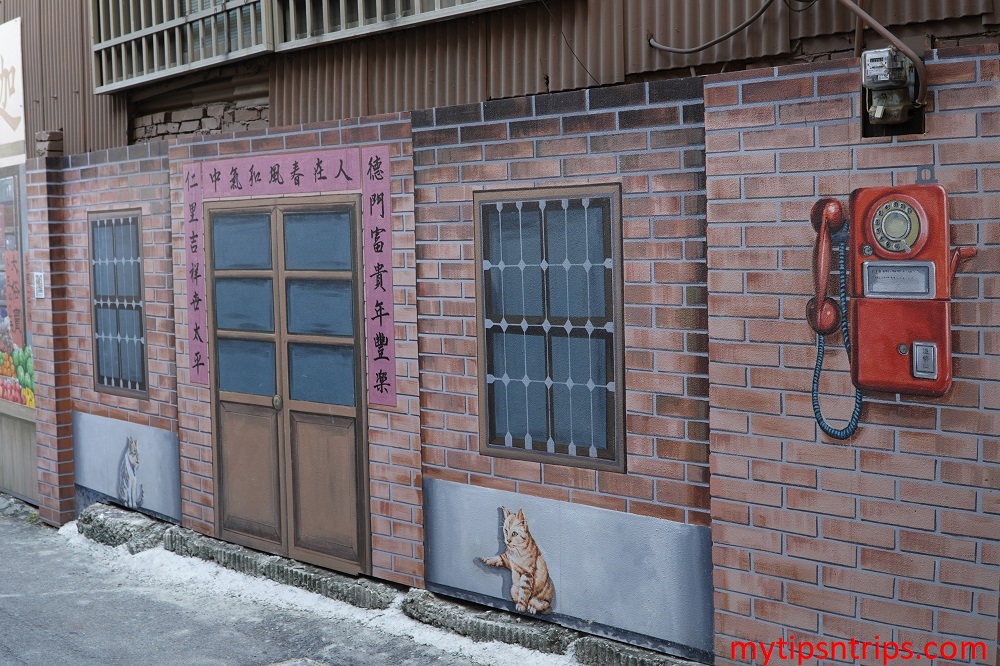
The first stop is Meiren-painted Village. This painted village is opposite the Kuang Tien General Hospital in Shalu District, Taichung City. The location is easy to find. There are alleys on all sides to enter. The entire place is not big. It can be finished in less than 30 minutes, murals with full of ancient flavor.
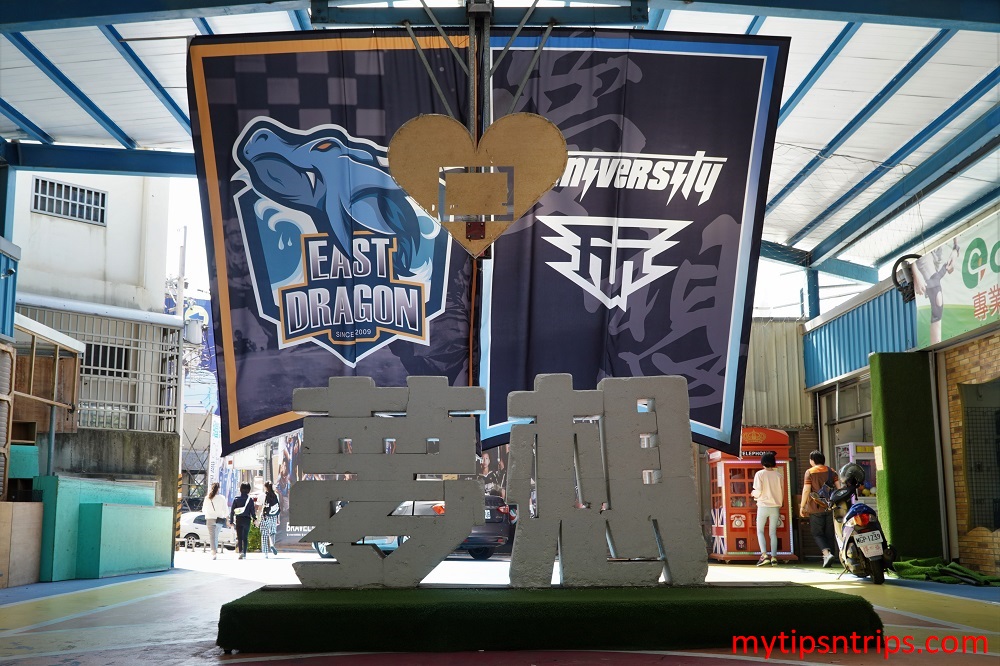
At the second stop, we headed to Shalu Dream Street. All shop doors throughout the street were painted with murals, and there were also many decorations surrounding them. There were basketball walls with hundreds of basketball, loving swings, and beautiful angel and butterfly wings painting. The word dream and the cloth strip are very eye-catching.
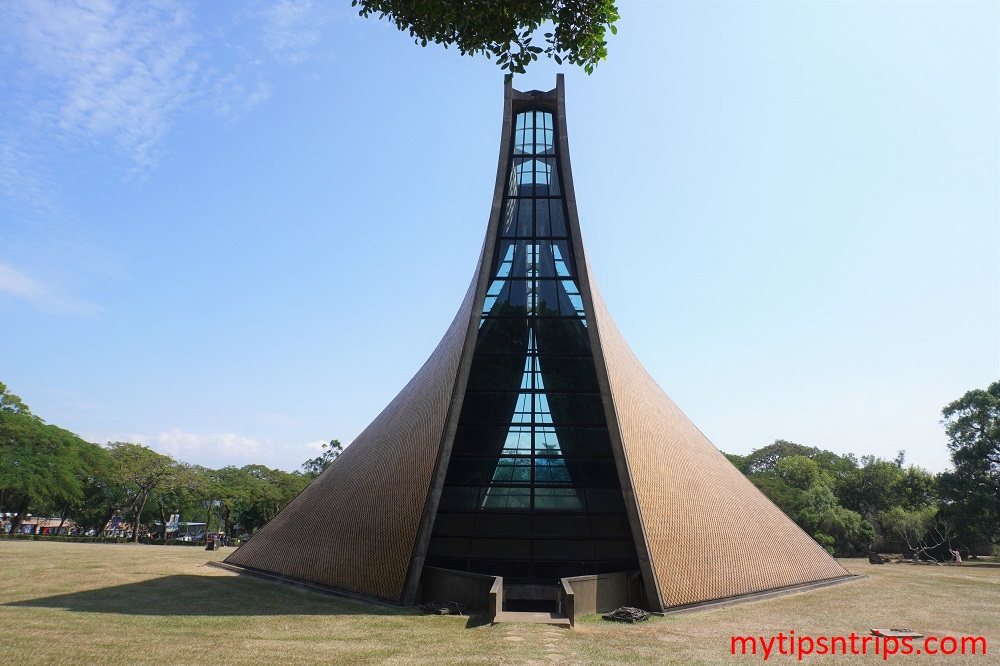
On the third stop, we went to Luce Memorial Chapel, a Christian chapel on the campus of Tunghai University in Xitun District, Taichung, Taiwan. It was created by the famous Taiwanese architect Chi-Kuan Chen and American Chinese architect I. M. Pei. It was built in September 1962, and it was completed on November 2, 1963. Because inside the university, our taxi cannot enter, we must walk a short distance to get there. The church is very special. The front and rear buildings are made of whole glass, and the pointed roof is very prominent.
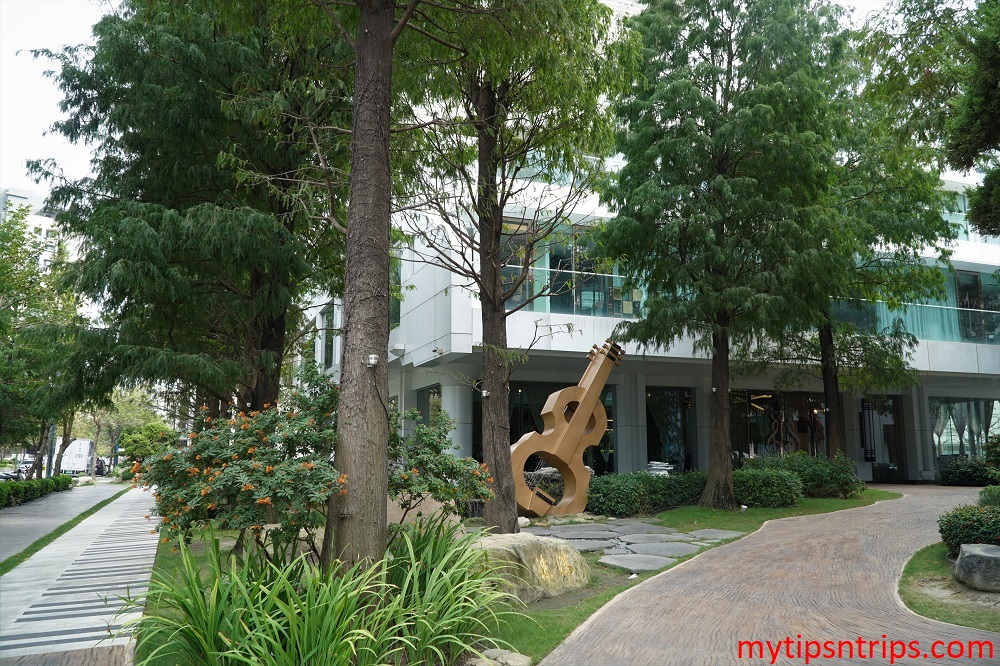
After lunch, we went to the PWF Piano with Forest Restaurant at 118, Qinghai South Street, Xitun District, Taichung City. This is a piano-themed building that can only shoot clearly with a drone. I planned to order two lunches for four people, so that we could save some space to eat something else, but the restaurant has the minimum consumption, so we order One per person. Fortunately, the food is good.

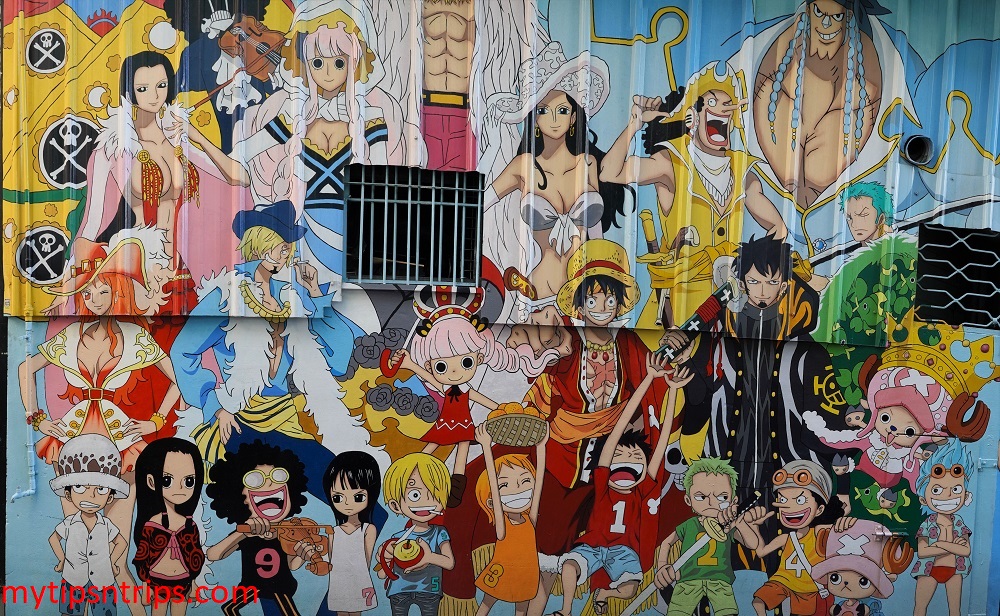
The fifth stop is the Painted Animation Lane, which is located at Lane 100, Linsen Road, West District, Taichung City. The entire road is filled with various anime characters, including One Piece, Dragon Ball, Crayon Shin-chan, and Slam Dunk, and anime fans who come here will fall in love with them.

On the sixth stop, Shenji’s new village. All bosses racking their brains to decorate the store, just to attract customers to take pictures and shop. But we left after taking pictures without spending. feel so sorry for all the bosses.
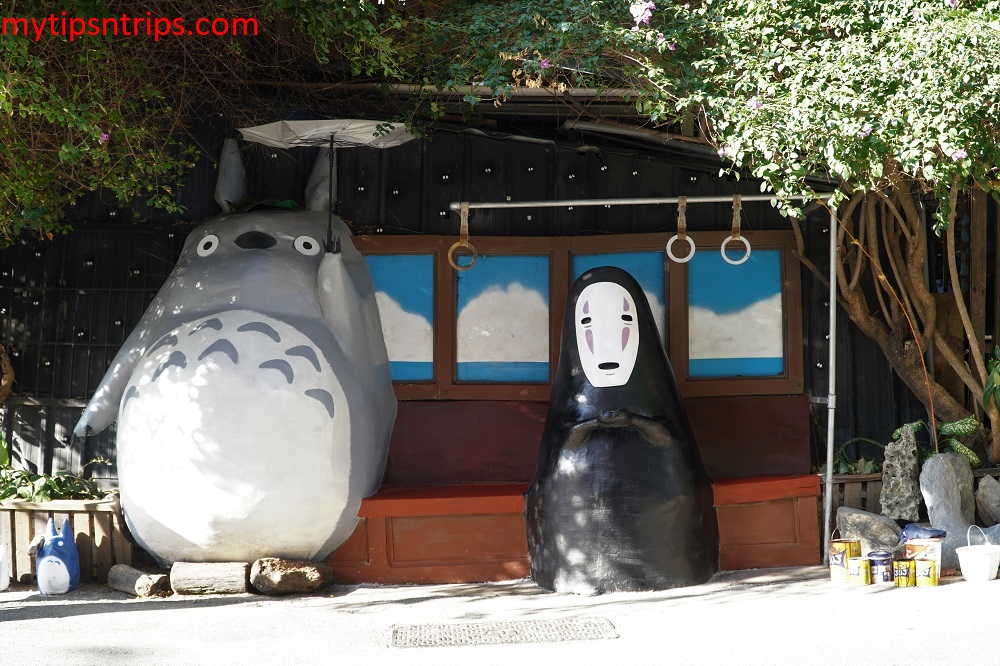
The seventh stop is Totoro Bus Stop 133 Qiaocheng Road, Dali District, Taichung City. This is a small attraction. There are not many photos that can be taken. It can complete within 5 ~ 10 minutes. But it’s still worth coming by, in addition to the giant Totoro and the Kaonashi, they installed a new Harry Potter sign board recently.
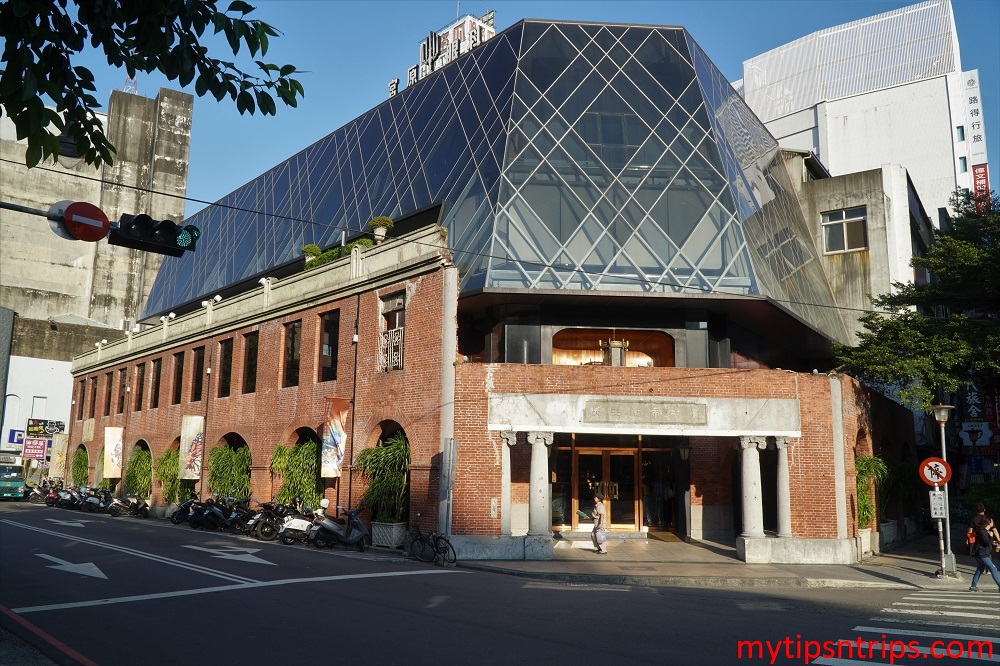
The eighth stop is Miyahara Ice Cream, located at 20 Zhongshan Road, Central District, Taichung City. Miyahara is a red-brick architecture built by Miyahara Takeo, a Japanese ophthalmology doctor in 1927. It was the largest ophthalmology clinic in Taichung during the Japanese colonial period. After the surrender of Japan in 1945, Miyahara became Taichung Health Bureau. As time passed by, the suspended Health Bureau slowly decayed and became an unused dangerous building. Fortunately, Dawn Cake, a pastry company renowned for its pineapple cakes, acquired the building and preserved Miyahara’s original red-brick walls and archway. The interior decor was redesigned like Hogwarts in the movie Harry Potter. The water well in the middle of the building is redecorated into a modern-looking fundraising box made of glass.
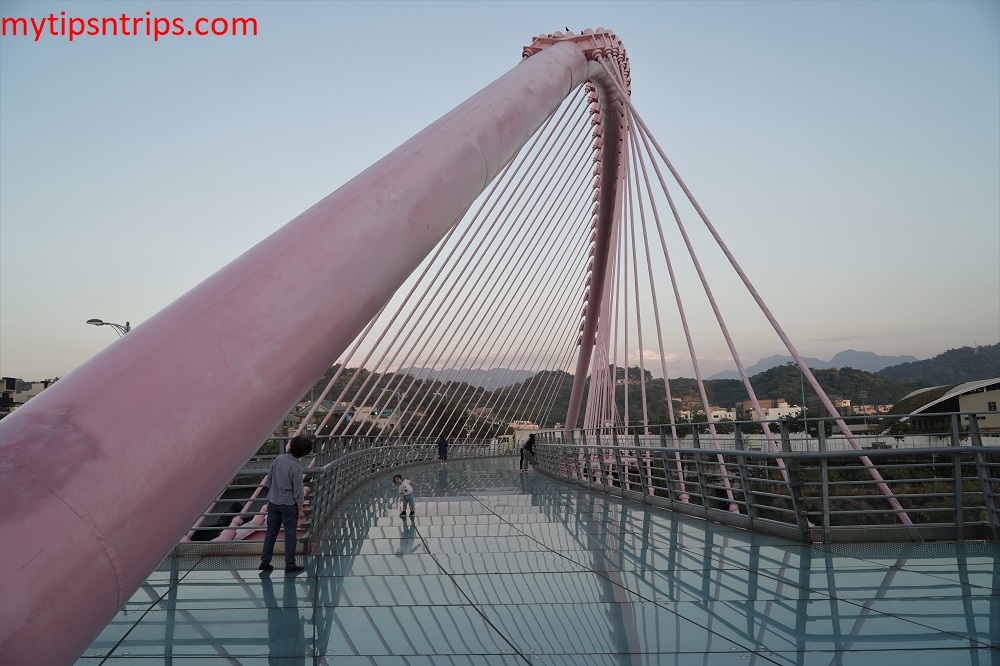
The last stop, the Dakeng Pink Valentine Bridge, located at No. 366, Buzi Road, Beitun District Taichung City, is a new attraction in the Dakeng area. The cable-stayed bridge pulled out by dozens of steel cables has an overall pink appearance, giving a romantic and warm feeling. The bridge doesn’t build with an icy concrete floor, but with an innovative design that reflects the entire bridge with glass. This pink pedestrian bridge with a unique, modern design is a popular spot for photography.

After a whole night of insomnia and a whole day of travel, we are all tired. After 5 o’clock, we check in to “This is Nest Inn” hotel, the hotel is near Feng Chia Night Market. After showering and rest, we leave at seven to Feng Chia Night Market. My friend suggested that we must try pig blood soup at Feng Chia Night Market. We were looking for pig blood soup at Feng Chia Night Market. Surprisingly, the entire Feng Chia Night Market had no one selling pig blood soup, so I bought the Taichung Famous “Small sausage in large sausage” suggested by the driver. I thought it was something related to the pig intestine. I personally really like pig intestine, but I received a Taiwan Sausage wrapped in sticky rice, so disappointed.
After returning to the hotel, the counter staff was very friendly and asked us how we felt after visiting Feng Chia Night Market. We answered after searching the entire night market, but we can’t find pig blood soup suggested to tried by my friend. The counter staff immediately called nearby stores and really found one nearby. In fact, we were very tired, but we didn’t want to disappoint him, so we went to try the pig blood soup, which tasted like pork miscellaneous soup added with pig blood previously sold in Singapore because pig blood is rich in bacteria, Singapore government stop it for selling. At the hotel, we found a note inside the hotel toilet: “Do not throw toilet paper into the toilet”. After checking with the counter staff, we found out, due to water pipes in Taiwan being small, not as big as Singapore and Malaysia, toilet paper will clog the water pipes. Unless it is a new building and water pipes have increased in size to resolve the problem. Later, we ask the driver, and he told us that his house was the same, and he needed to throw away the toilet paper separately.
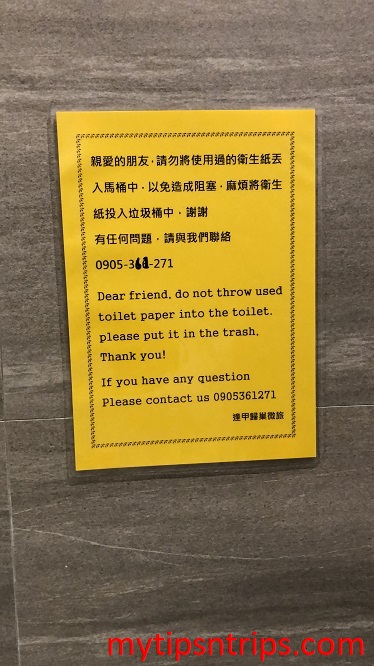
Day 2:QingJing
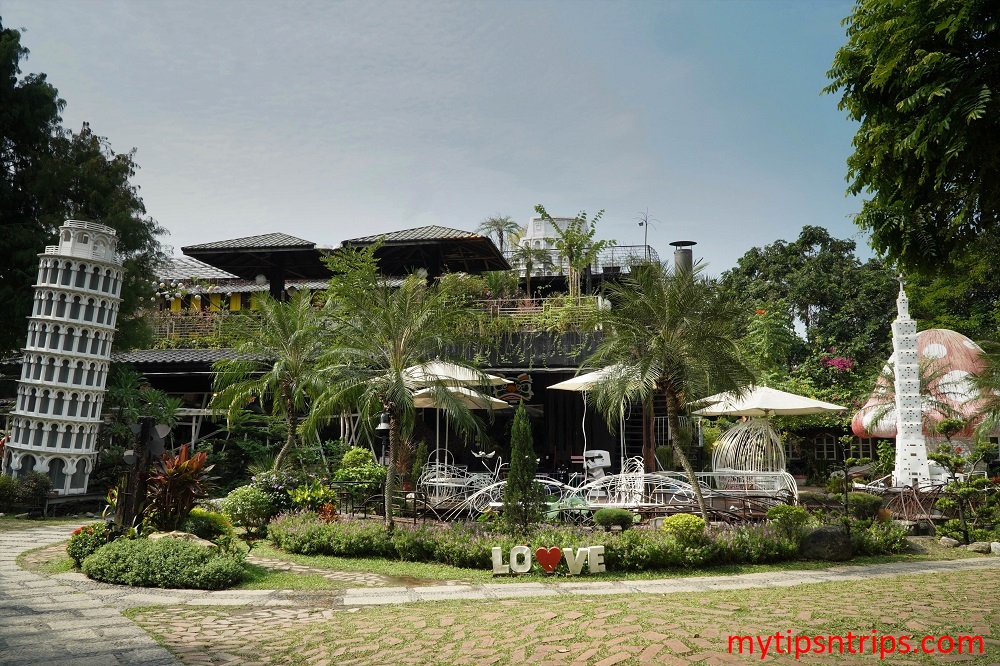
The next day, we headed to the Carton King Creative Park – Dakeng (Beitun), it is covering an area of about 1,600 square meters. The park displays a variety of paper art products, like cardboard trains, cardboard Leaning Tower of Pisa, cardboard windmills, and cardboard tables and chairs. The entry fee is NT$200 / person, and NT$100 can offset consumption.
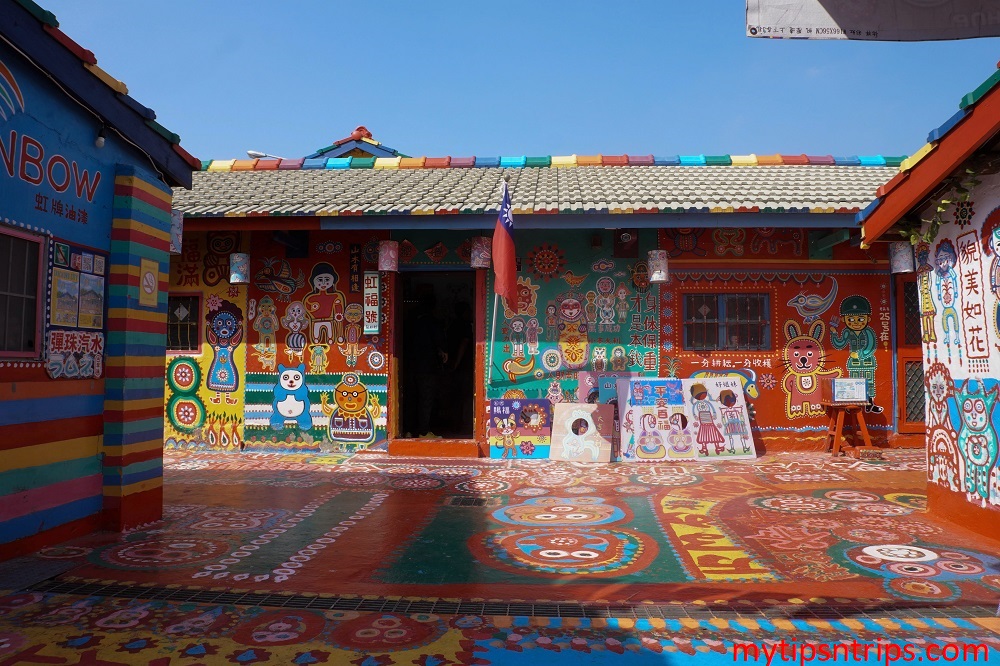
Next, we head to Rainbow Village, an architecturally painted landscape park in 408, Taiwan, Taichung City, Nantun District. In the last twenty years, these villages have been disappearing, one by one. The government gave the land to building companies, providing in exchange new decent apartments to the surviving veterans or their families. Rainbow Village in Taichung is one of these veterans’ villages. It was already being torn down house by house. One of the last village residents is Mr. Huang. One day he started to paint the empty and dying village. He painted animals, dolls, airplanes, manga characters, etc. … All with vibrant colors, filling the walls and the alleys. Students of the nearby Ling Tung University discovered the paintings, a few years ago. Rainbow Village started to attract attention, at first only in Taichung, then island-wide. After the protests of the local people, and also realizing that the village was becoming one of the attractions in Taichung City, the local government decided to suspend the demolition. It has been selected as one of the top ten check-in sites on the British travel website, selected as one of the photo spots for Japanese netizens, and selected as a place worth visiting in the world by The Secret Miracle.
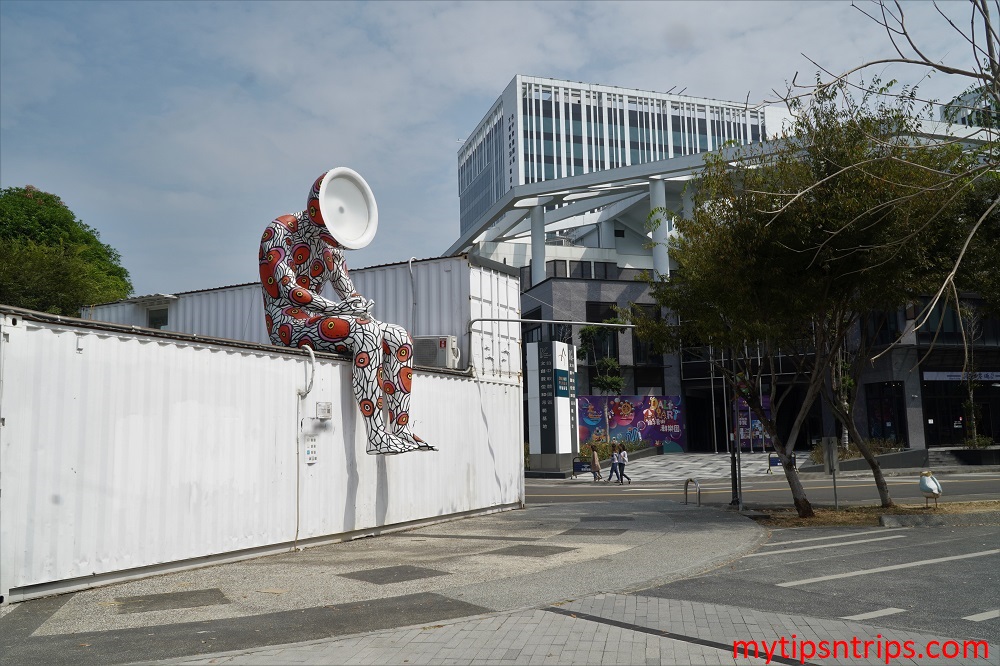
Before heading to QingJing, we passed by Dali Art Square along the way. We wanted to see the true face of the pensive giant, but the driver told us it had been blown away by the typhoon. After reached Singapore, I found out that it was driver bullshit. We just missed it because we did not enter the building. We just took pictures nearby.
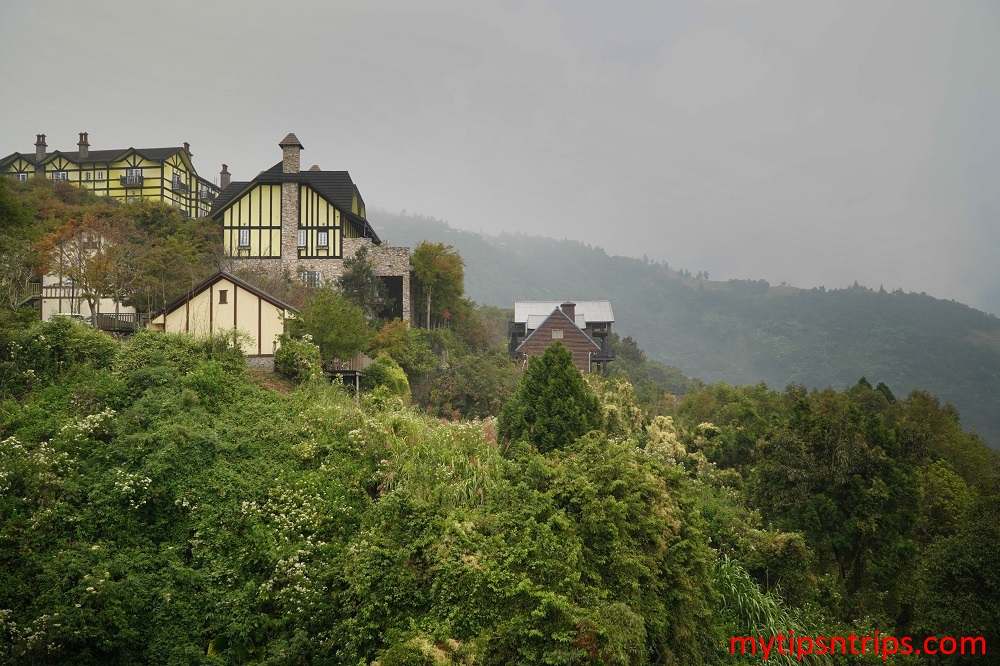

Then we went to QingJing Farm to watch the sheep show at 14:30 pm and the equestrian show at 3:45 pm. The entrance fee was 180 yuan per person. Then we went to The Old England Manor to take pictures and happened to catch the QingJing Torch Festival. The ceremony was very similar to Yunnan Torch Festival, they lit the entire road with torches. They also held a party in QingJing Elementary School, to raise funds to help the school. After inquiries, we know that there are many descendants from Yunnan stay in QingJing, who followed the Kuomintang to Taiwan during the civil war. We check in to Zusin Shin Garden Hotel after dinner, a very nice hotel, but unfortunately, it does not face east, we miss the sunrise.
Day 3:Hualien

After breakfast, we sat in front of the hotel facing the mountains, relaxing drinking coffee wait for the driver. It’s also a great enjoyment of life.
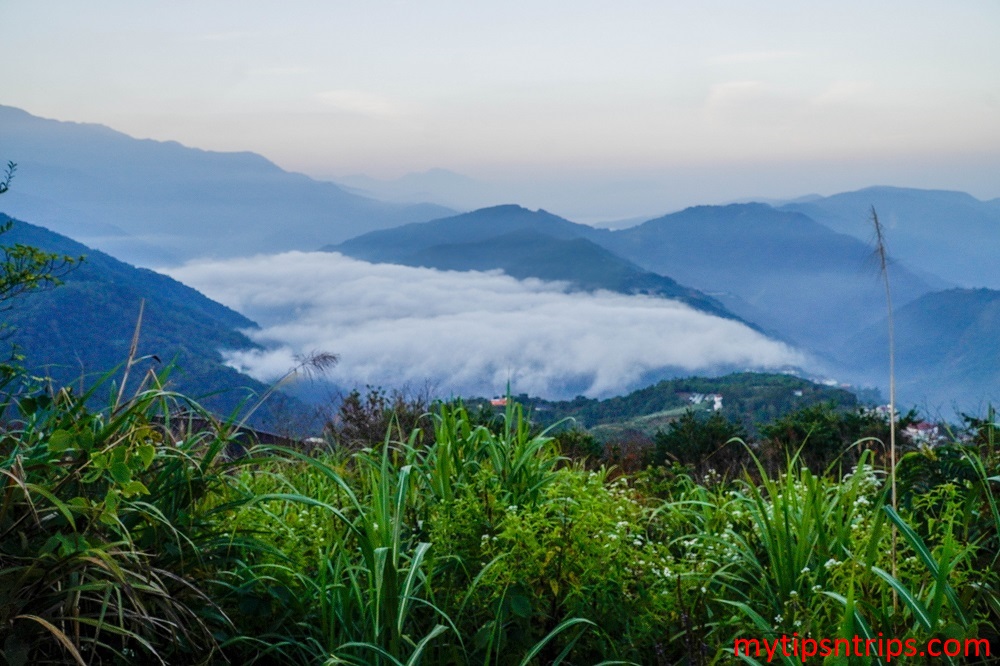
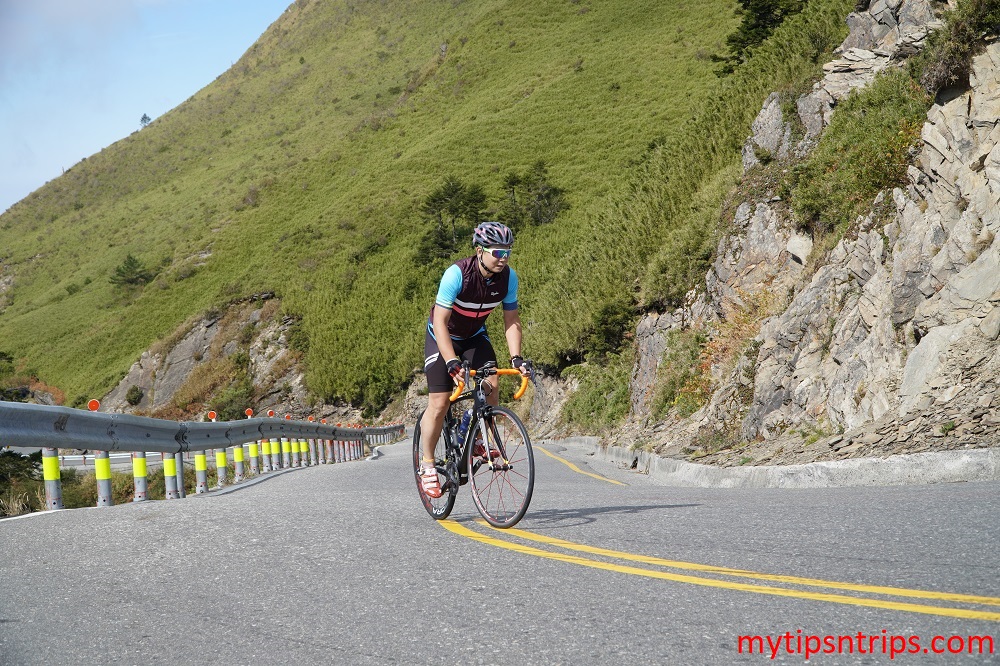
After coffee, we set off to Hehuanshan. The Hehuanshan National Forest Recreation Area is located at the junction of Hualien and Nantou. The High altitude is 2,300 ~ 3,400 meters and the area is 457.61 hectares. In front of the Visitor Center, there is a signboard of ” Hehuanshan 3,158 meters above sea level”, which is the elevation displayed on the 14th line of the route passing Hehuanshan. This is also the place that attracted me the most for the whole trip. Although the mountain road is steep and narrow, it really feels like a wonderland after climbing up to the mountain. We also saw a lot of bike riders riding the bike to climb up the mountain. I really admire their perseverance. At the top of the mountain, I found some bike riders successfully reached the top, and their perseverance can be imagined.
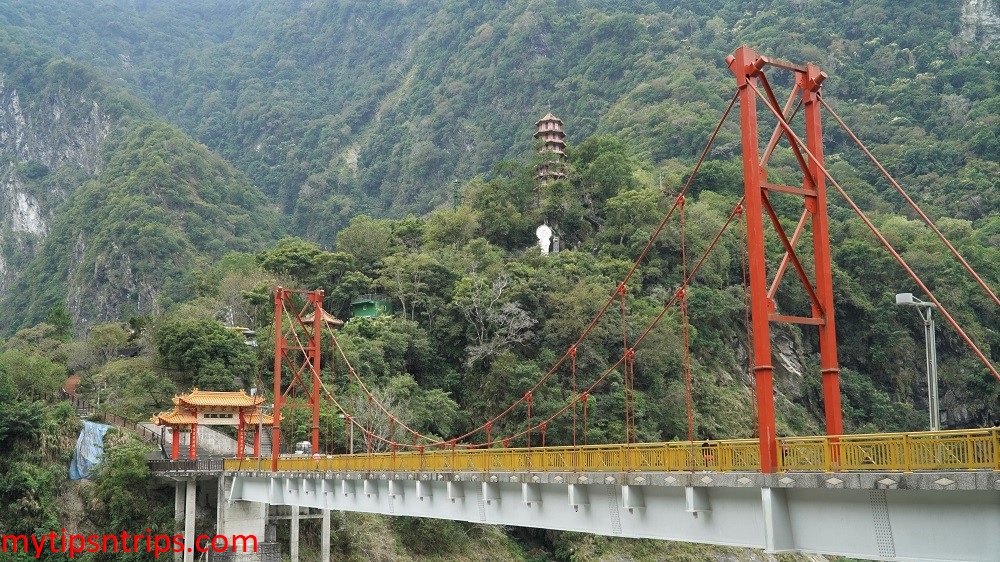
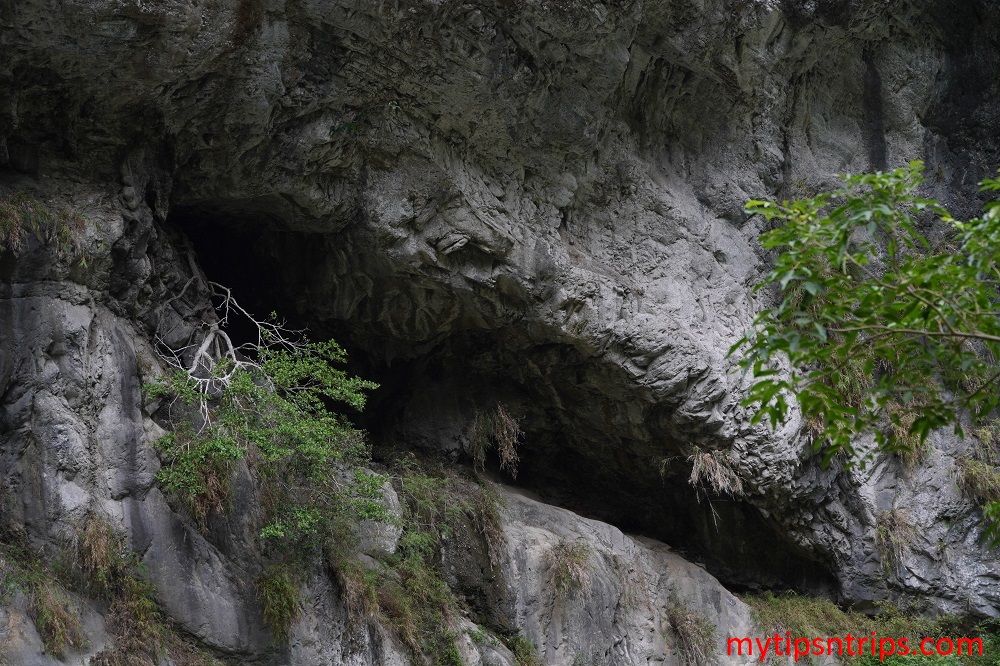
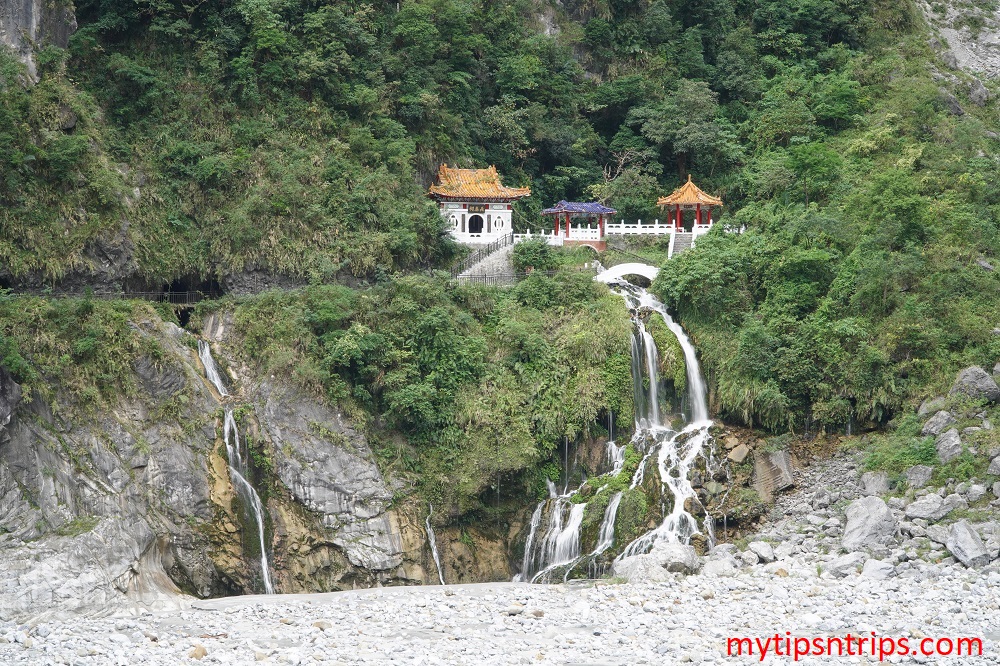
After Huanshan, we headed to the Bilu Giant Tree located at 127.6 kilometers of Zhongbu Cross-island highway. The Bilu Giant Tree is a Cunninghamia tree. It is over 3,000 years old, has a height of about 50 meters, and a tree diameter of 3.5 meters. On the way to the Bilu Giant Tree, we passed many clouds along the way. This is the first in our lives that we travel in the clouds. The sight of entering the clouds is very blurred. It is difficult to see the vehicles in front. I really admire those drivers who travel this road every day.
The next stop is Taroko National Park. The itinerary is as follows: First stop is Xiangde Temple and Pagoda. The second stop is Yuewangting. The third stop is the Taroko Swallow Grotto Trail and Taroko Tunnel of Nine Turns Jiuqudong Trail, and the Fourth stop is Spring Changchun Shrine. Taroko National Park is famous for its majestic, nearly vertical landscape of Marble Rock Canyon, a gorge along the creek, there are thousands of cliffs, precipices, canyons, rolling cave tunnels, marble rock formations, and streams.
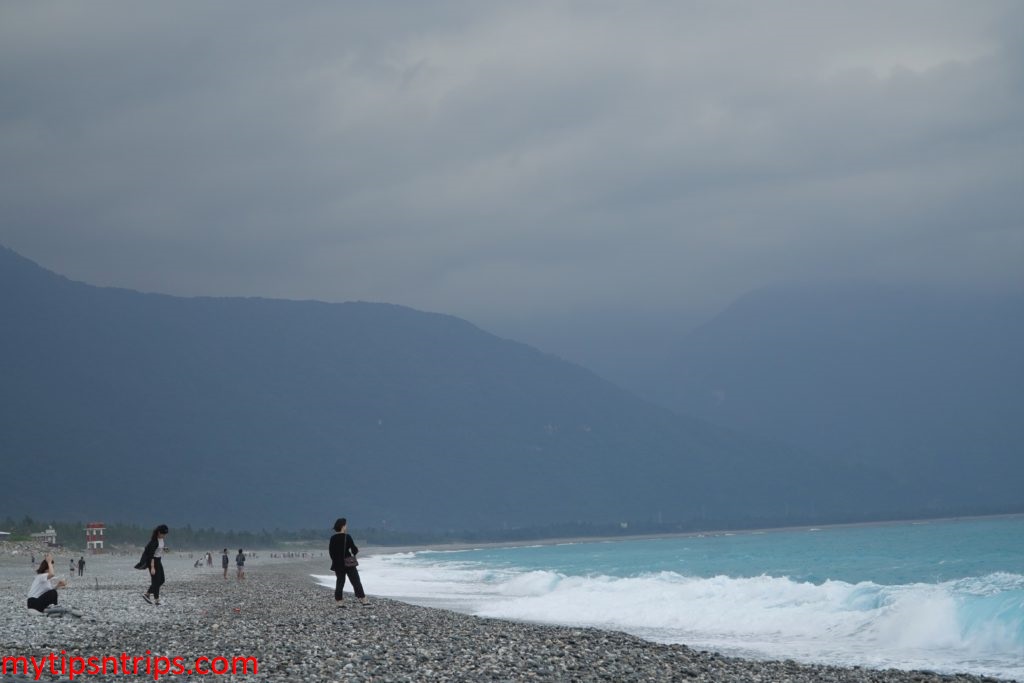
Afterward, we went to Chisingtan Scenic Area, which is 21 kilometers long, with various facilities, watching the beautiful curved bay by the strait, listening to the waves, and stacking stones to make a wish.
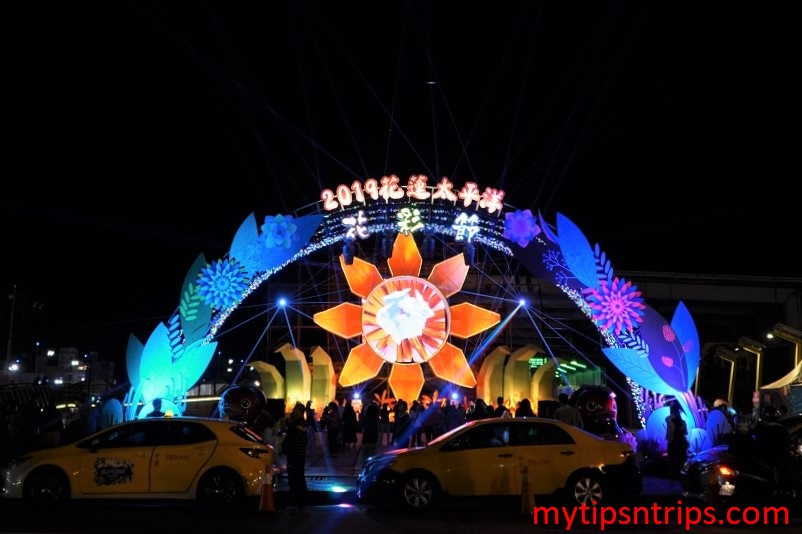
Tonight, we spend the night near Hualien Night Market. After checking in, we went to the Dongdaemun Night Market, the night market has a very strong ancient feel, and watching children play at the Ferris wheel, Carousel, assorted games, and street food, feels like New World Amusement Park, Great World Amusement Park, and Gay World in early Singapore. I also bought a Stinky tofu to try. It’s smelly but tastes good.
Day 4: Yilan
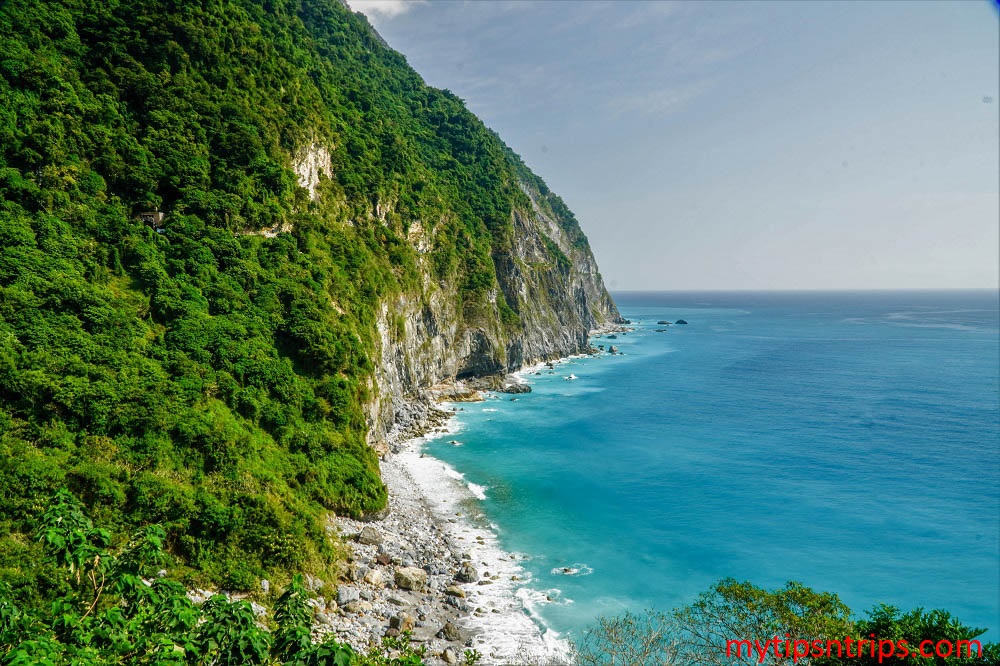

After breakfast, we set off to Chingshui Cliff, the last scenic spot in Hualien. About nine million years ago, the Eurasian plate collided with the Philippine plate, and it continued to rise, with abundant rainwater, the overlying rock layer was stripped by weathering and erosion. The marble and gneiss in the depths gradually lifted and exposed to the surface. The lithology of these rocks is dense, hard, and not easy to fall, so they can maintain steep cliffs. Coupled with the rapid crustal uplift in eastern Taiwan, it caused a rapid rise within a short distance. Under strong sea erosion, the slope is extremely steep and almost vertical. Therefore, the Ch’ing-shui Cliff, one of the eight scenic spots in Taiwan, was formed. I personally prefer the railway tracks along the cliff. I also took a picture of the train entering the cave. It looks pretty good.
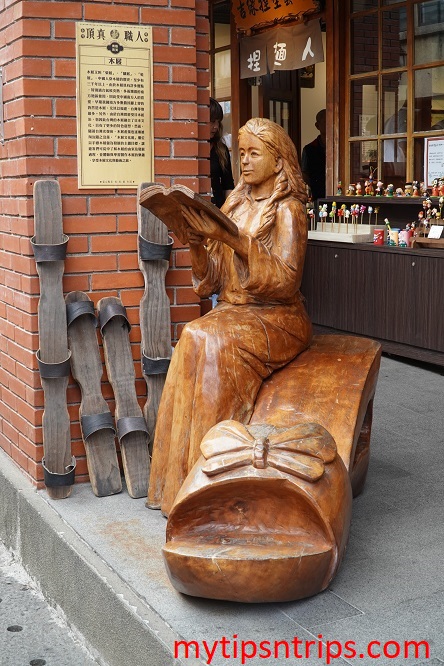

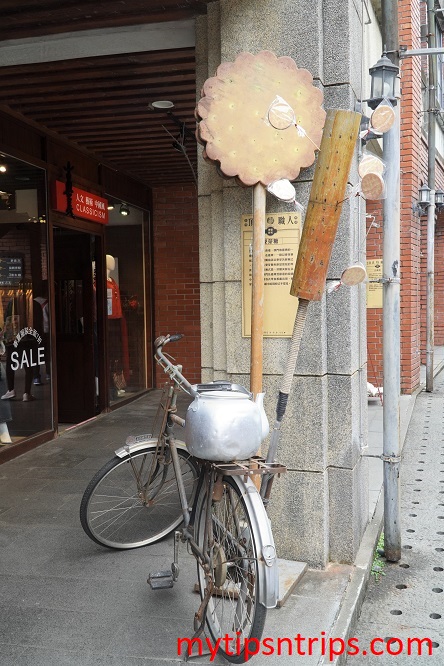
Then we left Hualien, following Taiwan’s most beautiful coastal highway to the National Center for Traditional Art. It claims can make tourists feel a theater-like charm, to experience and appreciate Taiwan’s rich and diverse crafts, folk skills, theater, music, and dance, but really disappointed after the visit.
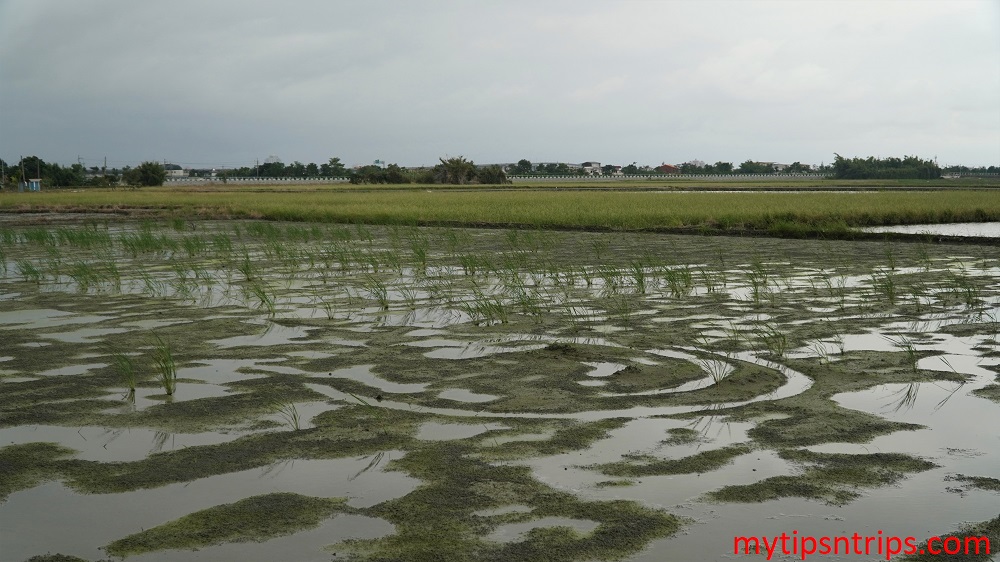
Next stop, we went to Dongshan Mr. Brown Avenue, because the beautiful rice fields have harvested, so we casually took pictures and leave.
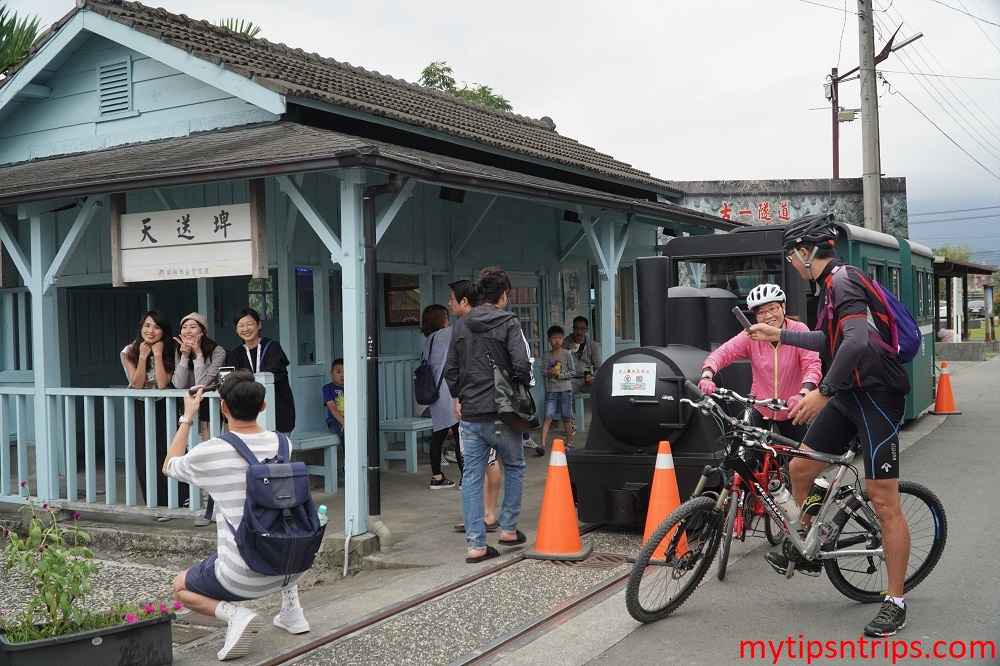
The next stop, Tiansongpi Railway Station, Tiansongpi Station was constructed during the Japanese Colonial Period. It was one of the ten stations on the Taiping Mountain Forest Railway, and an important transit station before entering the mountain area from the plain section in the early days. It was mainly used to transport logs, and a transportation business carrying passengers at the same time, facilitating the access of residents. Because Tiansongpi Station with the appearance of light blue creating a unique, tranquil atmosphere, it was chosen to be a filming scene of the famous Taiwanese idol drama Autumn’s Concerto, which draws big crowds and attracts visitors to come here for taking pictures. This station is one of the hot scenic spots in Sanxing Township, Yilan County.
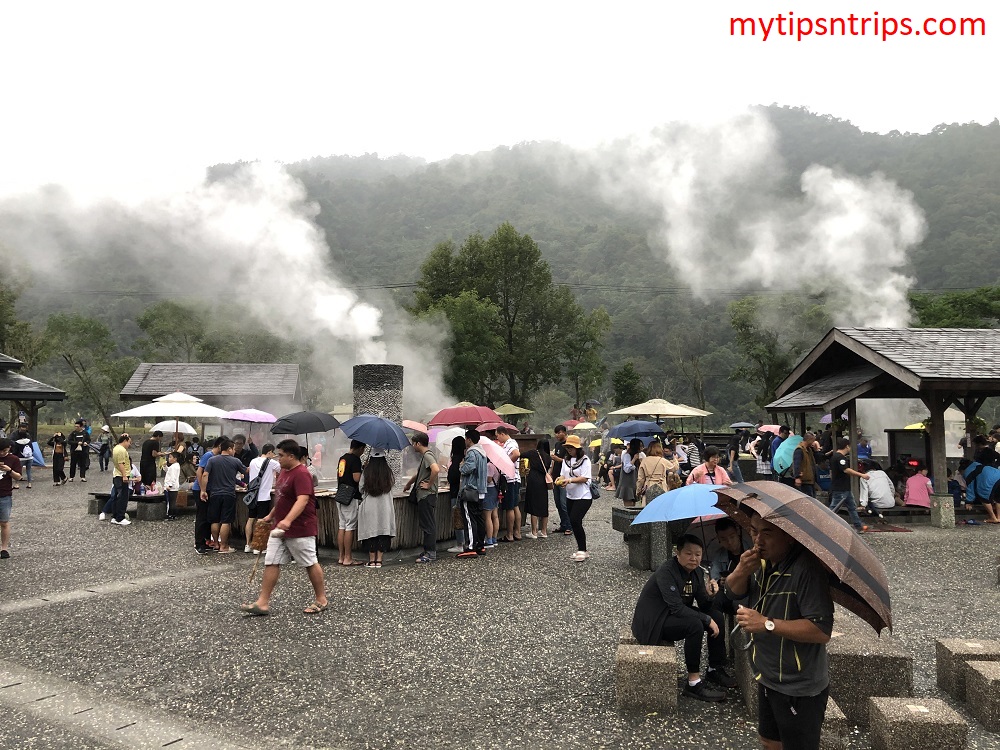
The next stop is Water Geothermal Square, which is located at 267, Taiwan, Yilan County, Datong Township. Geothermal Power Plants Hot water is pumped from deep underground through a well under high pressure. When the water reaches the surface, the pressure is dropped, which causes the water to turn into steam. The steam spins a turbine, which is connected to a generator that produces electricity.
Tonight, we stayed near Luodong Night Market. After two days of the night market, we felt a little numb and couldn’t find interest anymore, so we strolled for a while and return hotel to rest.
Day 5: New Taipei City

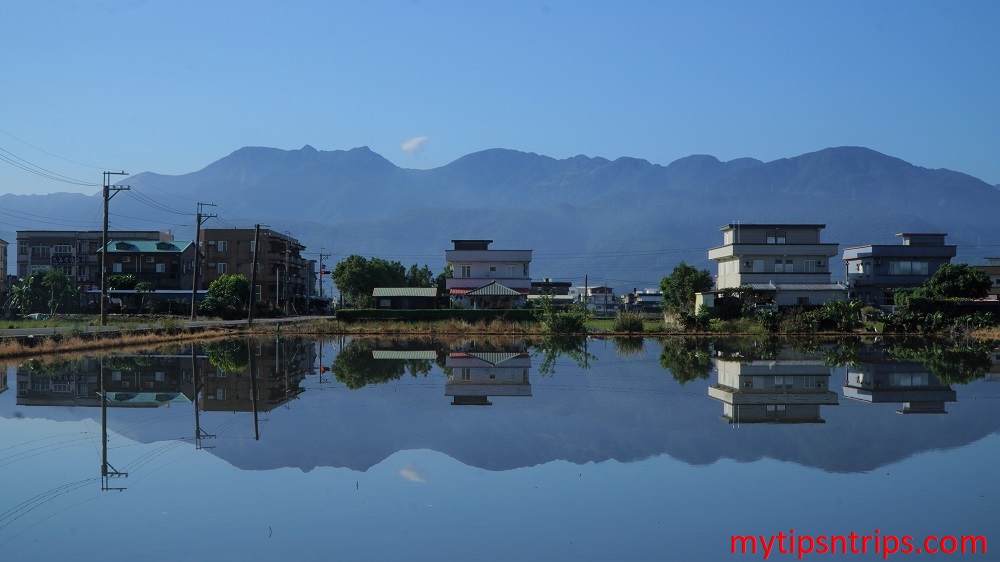
Following the longest tunnel in Taiwan, we left Yilan to Yehliu. Yehliu is a cape on the north coast of Taiwan. It’s known as Yehliu Geopark, it is about 15 km from Keelung Harbor, between Jinshan and Wanli. Yeliu is a small peninsula, 1700M long and 50-250M wide. a landscape of honeycomb and mushroom rocks eroded by the sea. Well-known formations named for their shapes include the Queen’s Head and Dragon’s Head. The park is also home to birds such as ospreys and little egrets. In the village of Yehliu, the elaborate, 19th-century Baoan Temple was built using materials from an abandoned boat. There is also a statue of Lin Tian Zhen, Lin Tian Zhen was a Yehliu fisherman that went to the rescue of a tourist that fell in the raging seas at Yehliu. His statue was erected in honor of his heroic deeds and was the pride of the Yehliu people.
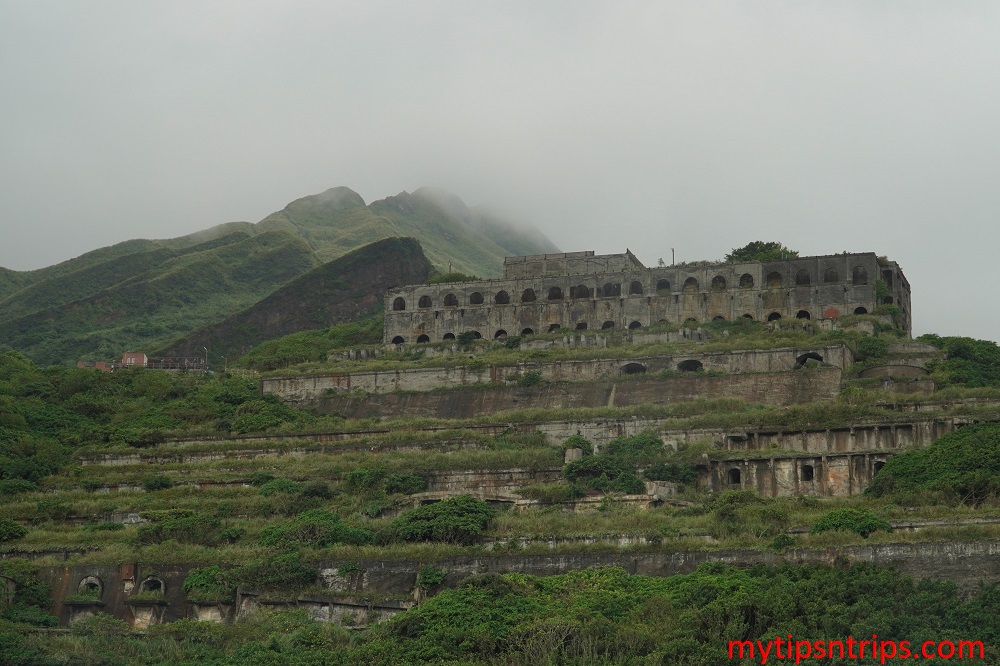
Before entering Jiufen, we visited the Yin and Yang Sea, Remains of the 13 Levels, Golden Waterfall, and the New Taipei City Gold Museum.
The Yin and Yang Sea is a natural occurrence formed by minerals, featuring “half gold, half bluish green” seawater. After the river from the Jinguashi mountain area high in minerals meets the sea, it forms the half-golden, half-bluish-green spectacle at the river mouth all year long. If there is time, visit the popular photo site “Yin and Yang Sea C curve”. Hike to overlook the magnificent Yin and Yang Sea and C-shaped bay. It is a very popular photo site for rail.
The Remains of the 13 is a former smelter plant in Lianxin Village, Ruifang District, New Taipei, Taiwan. It is also called the Potala Palace of Mountain Mines. The building used to be a copper and gold smelter plant called the Shuinandong Smelter that used to process refined ore from Jinguashi and Jiufen. After the handover of Taiwan from Japan to the Republic of China in 1945, the refinery was taken over by a state-run company. In 1973, the copper and gold minerals from the area had been exhausted and subsequently, the activity and company were shut down.
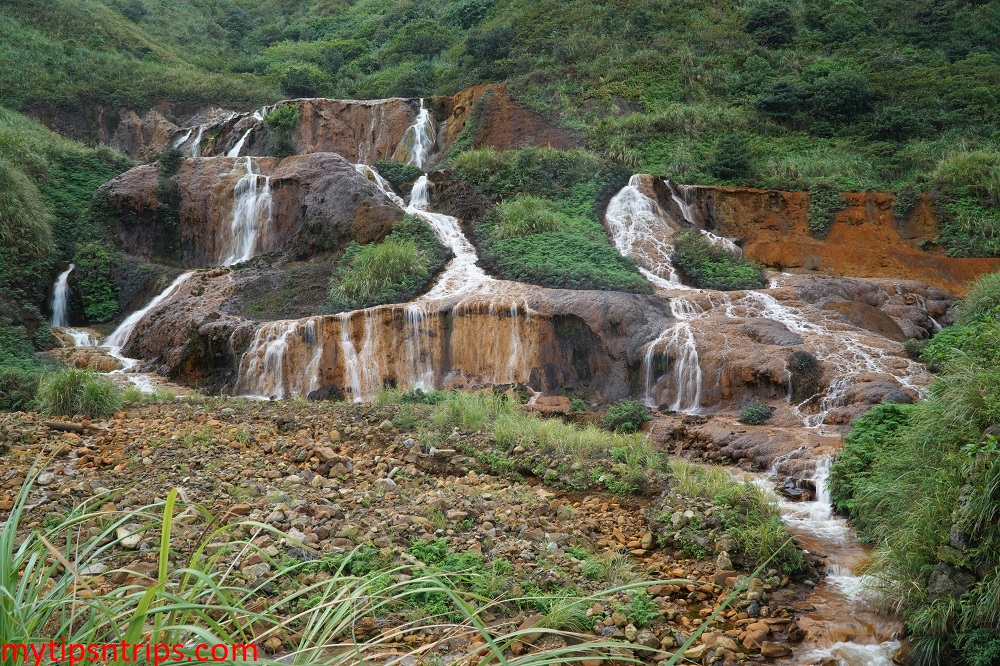
The Gold Museum is in the mountainous town of Jingua Rock in Ruifang Township, New Taipei City. With plenty of historical, humanities, and natural heritage, the park is the first ecology museum in Taiwan. It lays special emphasis on heritage preservation, sustainable development; old buildings reuse as well as localized operations aimed at promoting regional development. In addition to enjoying the unique geological and natural sights here, visitors to the park will have a better understanding of the mining history and community culture of Jingua Rock. Jingua Rock is ready to create a fresh golden legend with the participation of residents who together will forge the glamour of this land.
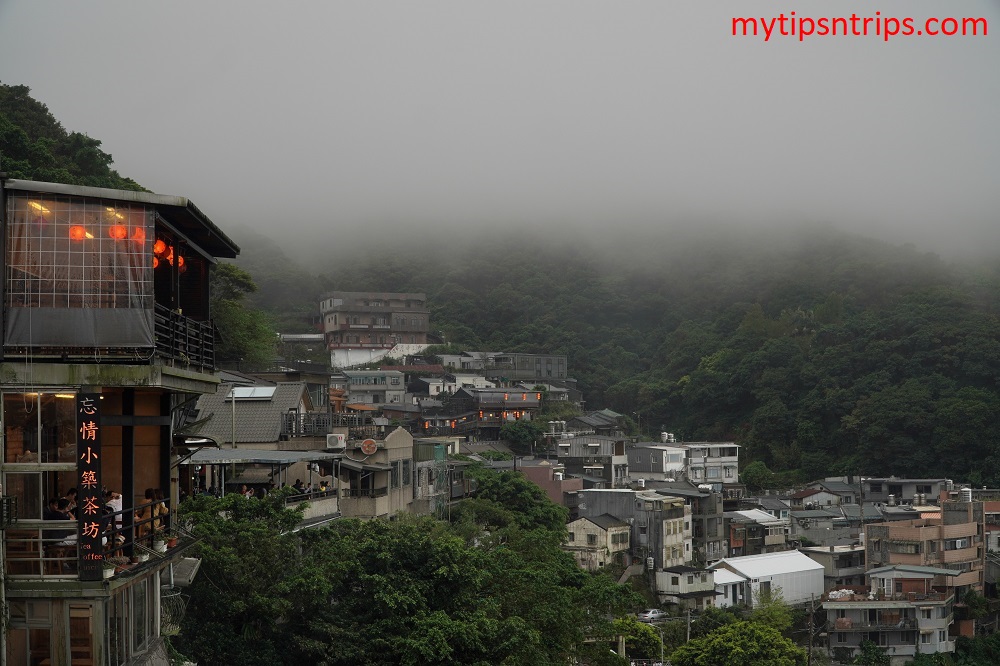
The next stop is Jioufen and Shifen. Jiufen is a mountain town in northeastern Taiwan, east of Taipei. It’s known for the narrow alleyways of its old town, packed with teahouses, street-food shacks, and souvenir shops. Near central Old Street is the Shengping Theater, established in the 1900s and since restored. A City of Sadness was filmed on location in Jiufen. I personally don’t like it very much, it feels like a shopping street to me.
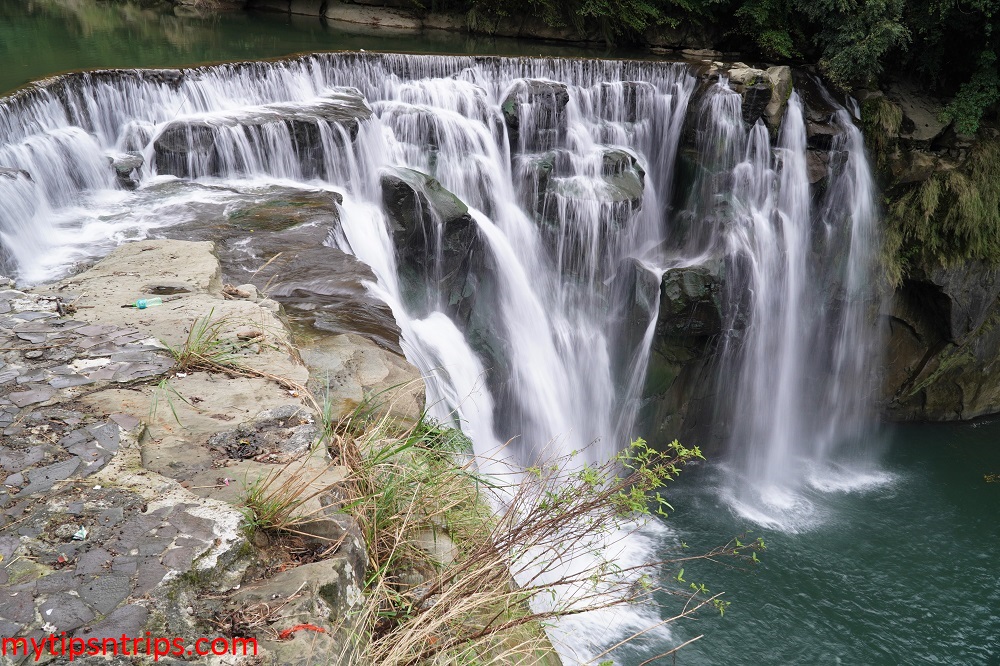
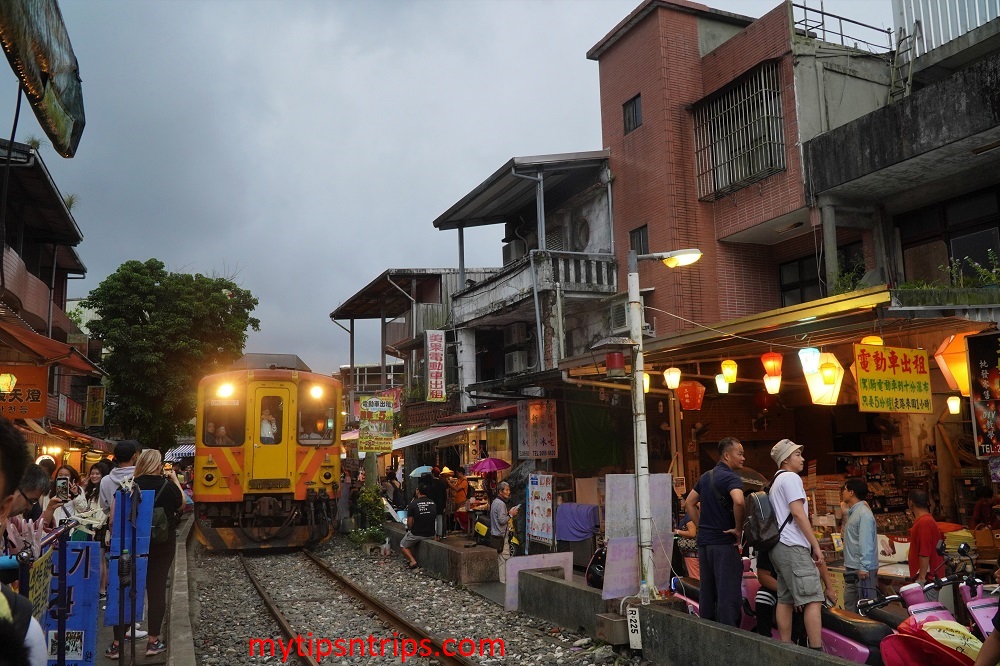
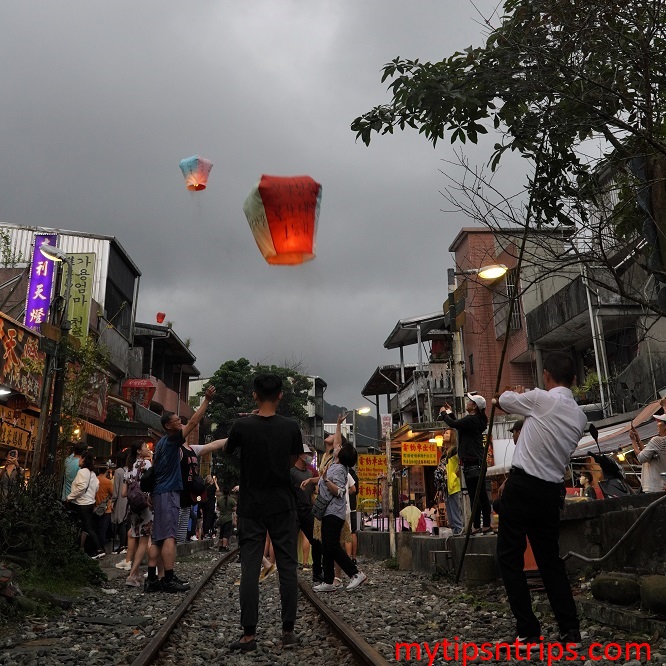
Shifen is well known for the Shifen Waterfall, a 40-meter-tall waterfall that creates a rainbow as it splashes into the lake, widely regarded as the most scenic in all of Taiwan. The train station located down the river from the waterfall area, originally built for transporting coal, was built right alongside the Shifen Old Streets, and today stands as a reminder of Taiwan’s history and culture. With the marketplace surrounding the train station and the openness in which people can freely cross the tracks running straight through the center of town. The best place to photo train runs through this old street and sky-lantern lighting.
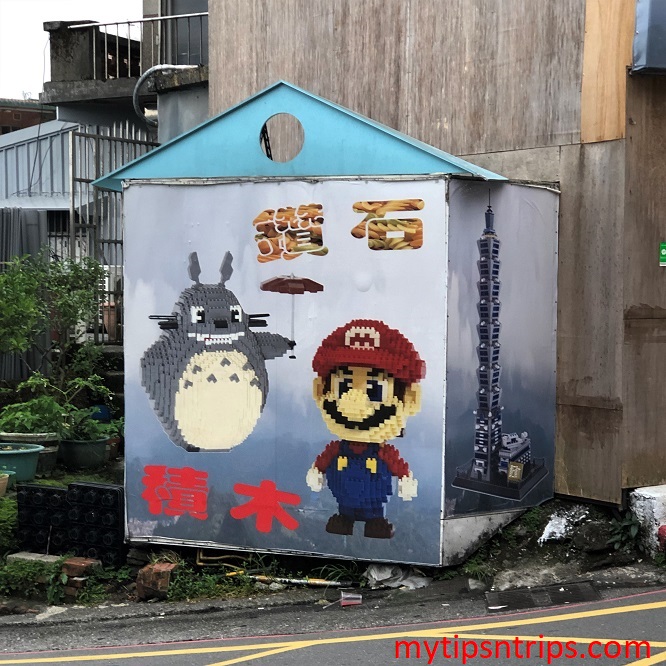
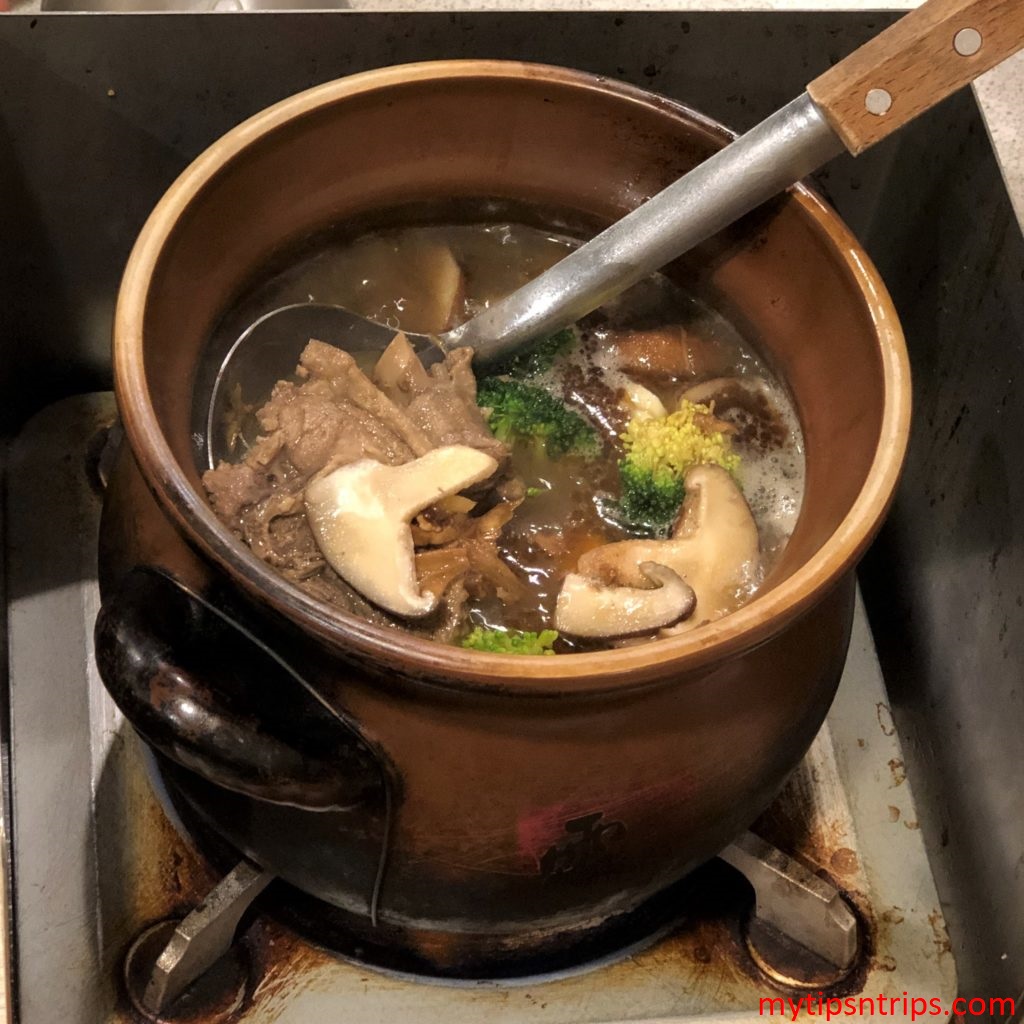
For the next two nights, we stay at Bayman Hotel. The hotel is close to Taipei Station and Ningxia Night Market, quite convenient to access but there is no elevator for the hotel. We live on the highest floor of the fourth floor, which is considered good exercise for us every day. After checking in, we headed to Minsheng West Road near Ningxia Night Market to try the Ginger Duck, which is very good with duck soup.
Day 6 Taipei
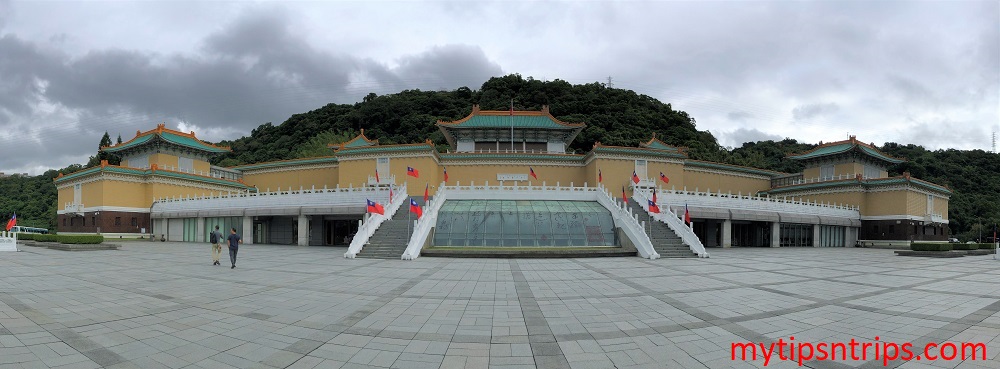
Early morning, after breakfast, we go straight to the National Palace Museum, hope to enter the Museum at 8:30 am when opens. It is known as “Beijing Forbidden City sees architecture, Taipei National Palace Museum sees cultural relics”. We visited the treasure Jadeite Cabbage and other collection of the National Palace Museum. But the Meat-shaped Stone was missed because it was transferred to Tainan due to renovation going to take place in the museum. After 2 and half hours visit and the museum getting crowded, we went to the bus station and took the Taipei Sightseeing Bus to start our journey in Taipei.
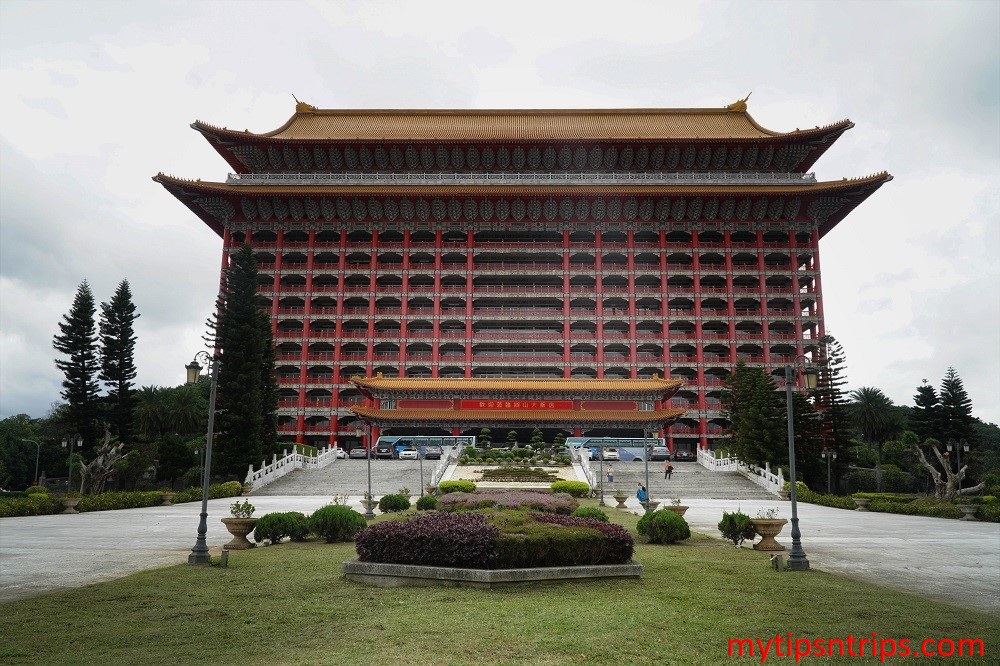
The second stop is The Grand Hotel Taipei. The Grand Hotel Taipei is a Chinese-style hotel located in Zhongshan North Road, Zhongshan District Taipei City. The palace-style building was completed in 1973 and is one of Taipei’s famous landmarks.
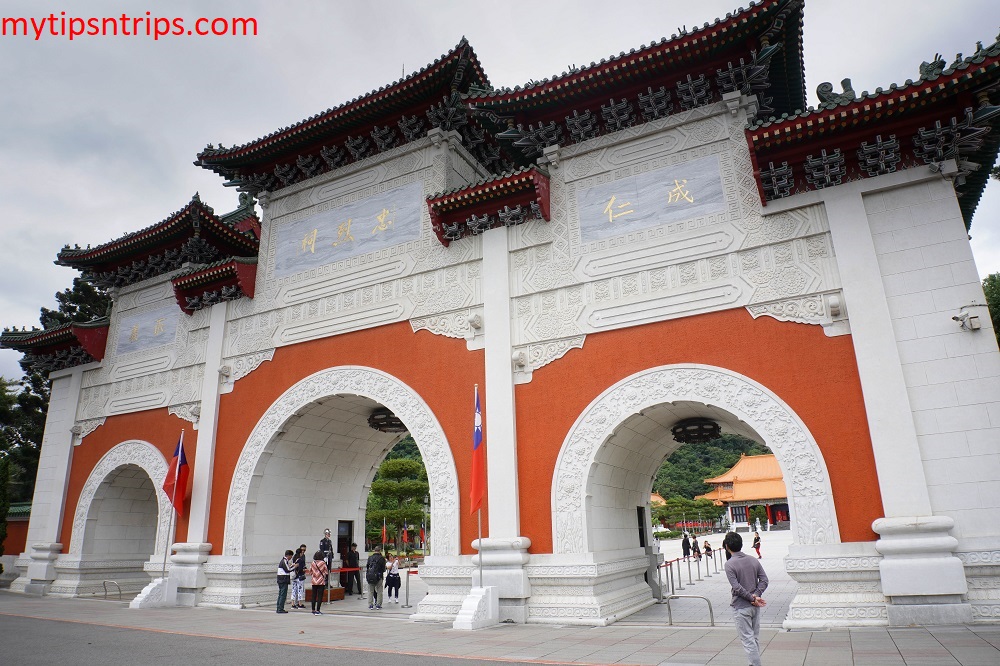
The third stop is National Revolutionary Martyrs’ Shrine, Built on Chingshan Mountain and overseeing the Keelung River in Taipei’s Zhongshan District in 1969, the Martyrs Shrine recalls the architecture of the Hall of Supreme Harmony in Beijing’s Forbidden City. The structure houses the spirit tablets of about 390,000 persons killed, among other engagements, during the Xinhai Revolution, Northern Expedition, Second Sino-Japanese War, Chinese Civil War, and the First and Second Taiwan Strait Crises. A change of the honor guard from the various branches of the Republic of China Military, similar to the rituals at the Sun Yat-sen Memorial Hall and Chiang Kai-shek Memorial Hall, takes place at the shrine.
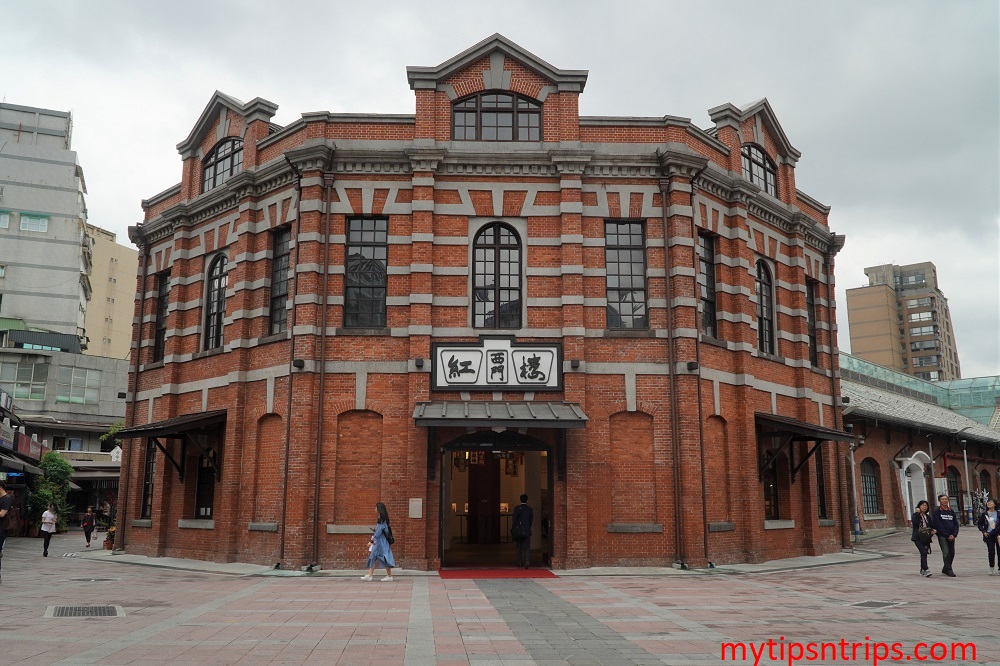
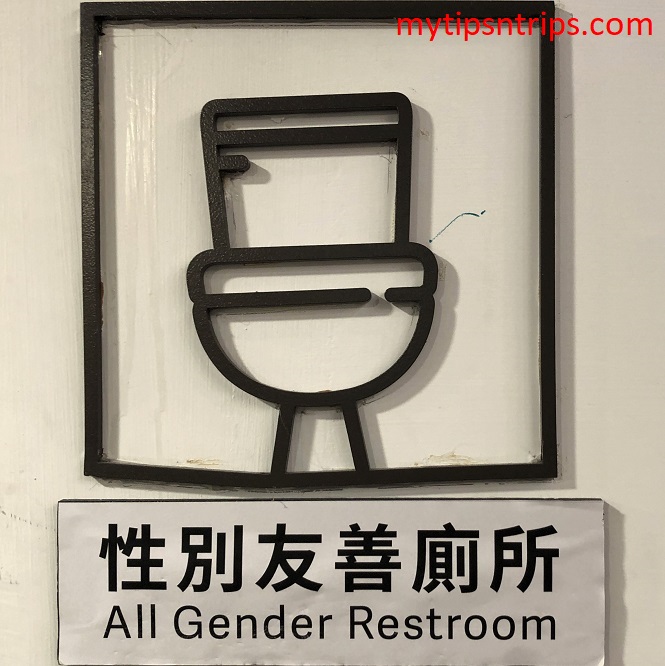
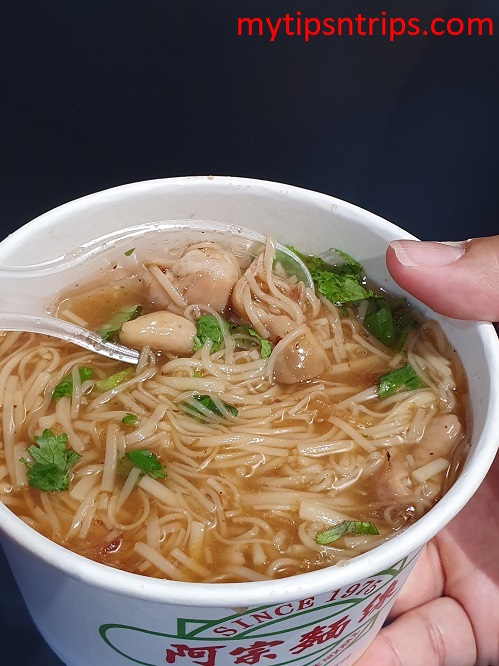
Fourth stop We went to Ximending to try the Ay Chung Rice Noodles. The queue was fast and the taste was very good. Ay-Chung Rice Flour Noodles is one of the most famous street food restaurants in Taipei’s Ximending district, that specializes in rice flour noodles. After a meal, we went to The Red House (Honglou). Built-in 1908 by the Japanese, this Western-style building and its surrounding square located at Ximending is home to Taipei’s creative and culture industry, hosting exhibitions and performances daily. Originally, the complex with built to serve as the first government-operated public-run market, and now is classed and preserved as a municipal heritage site. The building features an octagonal entrance and cross-shaped floor plan where merchants could showcase their goods. Today the market has modernized to become a space for the creative and art industry, including an outdoor Market for Artists and Designers located within the North Square. There is a Unisex toilet inside The Red House, also called gender-inclusive, gender-neutral, and mixed-sex or all-gender toilets, bathrooms, or restrooms, which refers to public toilets that are not separated by gender or sex.
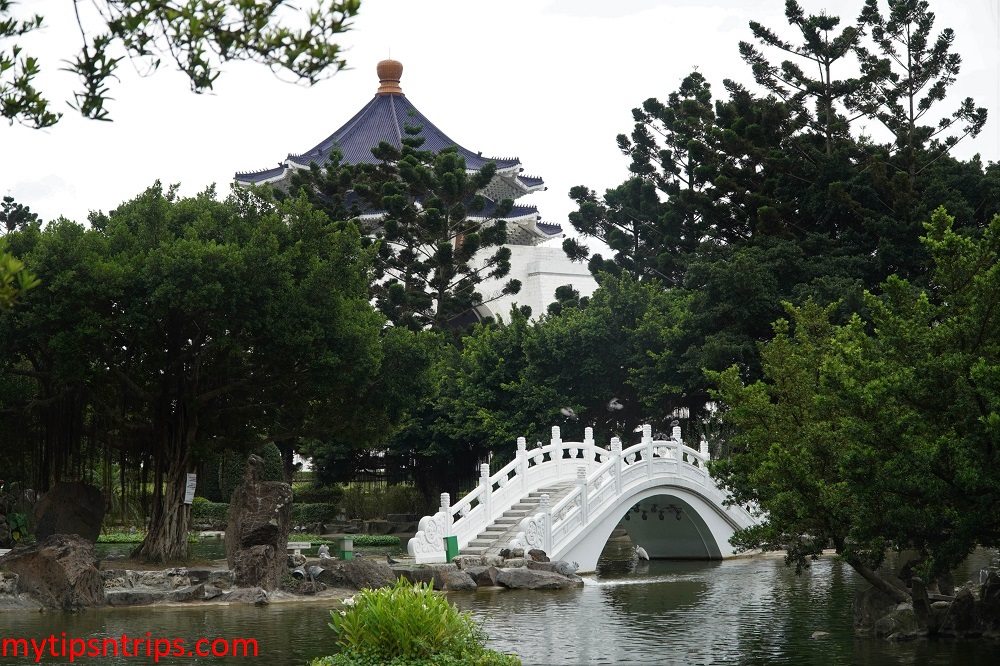
The fifth stop is Longshan Temple and Bopiliao Historic Block. Longshan Temple is the most well-known temple in Taiwan, the Mengjia Longshan Temple was built in 1738 by settlers from Fujian as a gathering place for Chinese settlers. Located in the old village part of Taipei, Wanhua District, this temple has stood the test of time and lasted through several natural disasters and wars. Bopiliao Historic Block was originally the main road connecting the area surrounding Longshan Temple to the Guting area (nearby the present-day Shi-Da Night Market), the road is now preserved by the city government as a historical and cultural district where visitors can admire many different architectural styles.
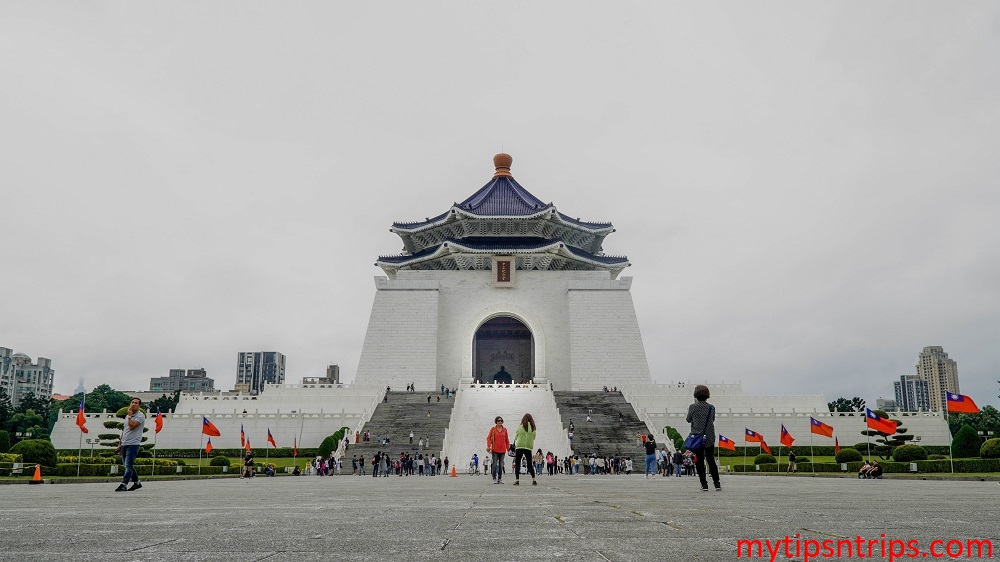
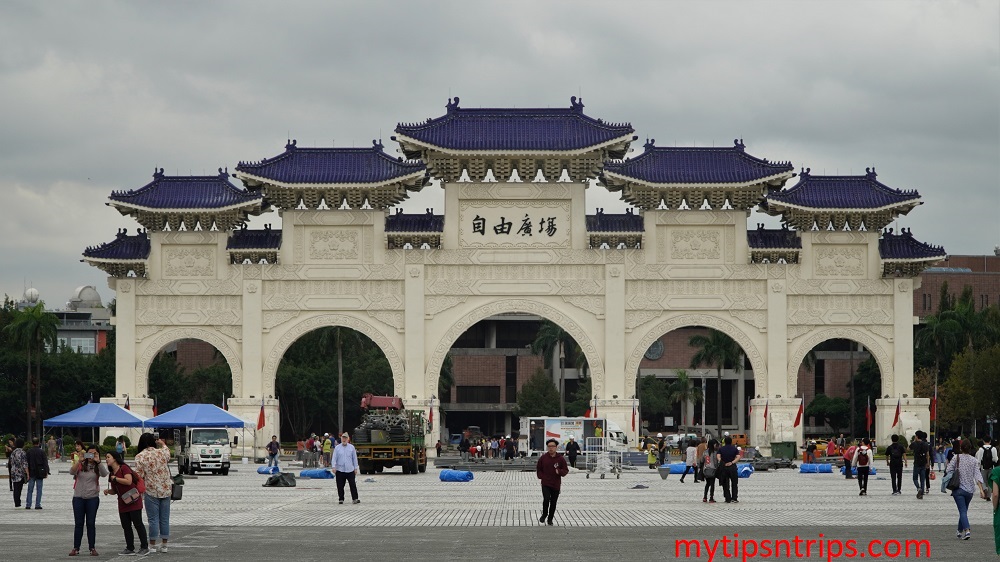
Sixth stop is Chiang Kai-shek Memorial Hall and Liberty Square (Taipei). The most prominent historical landmark in Taiwan, the CKS Memorial Hall was erected in honor and memory of Generalissimo Chiang Kai-shek, the former President of the Republic of China, and was opened in 1980 as part of a national park and gathering area. The name of the square is officially Liberty Square (自由廣場), as seen above the front gate, however, the name change was politically motivated and most people in practice still refer to the entire complex as CKS Memorial Hall. The octagon-shaped white building rises 76 meters and is covered with blue tiles and red accents, echoing the flag of the Republic of China. The eight sides represent the Chinese cultural symbolism of the number eight which is traditionally associated with fortune and wealth. The two sets of 89 steps represent Chiang’s age of death and lead up to the main hall housing a large bronze statue of Chiang protected by military personnel which changes hourly.
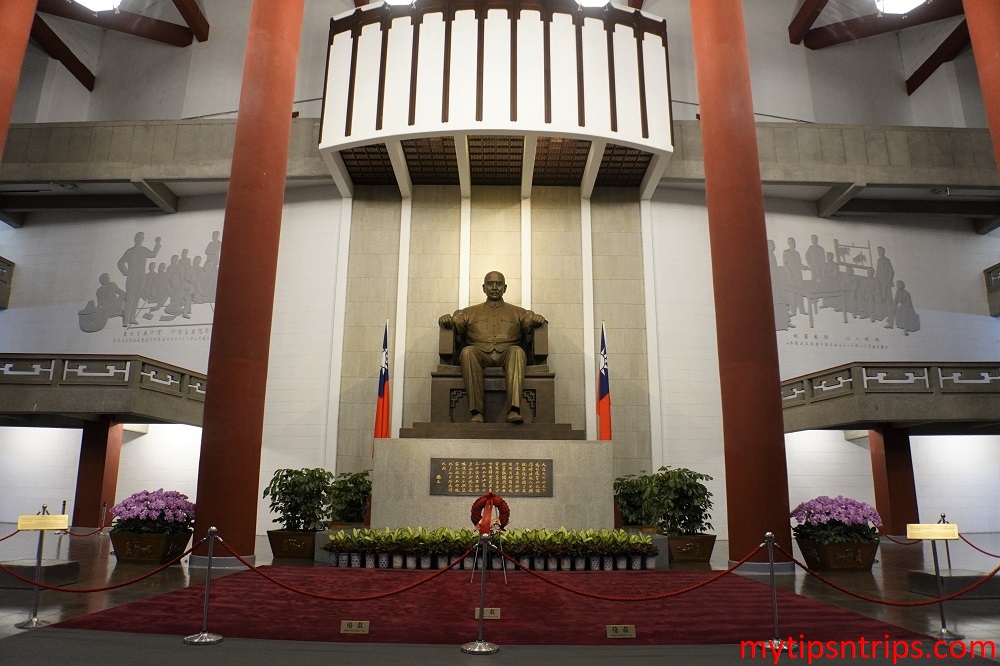
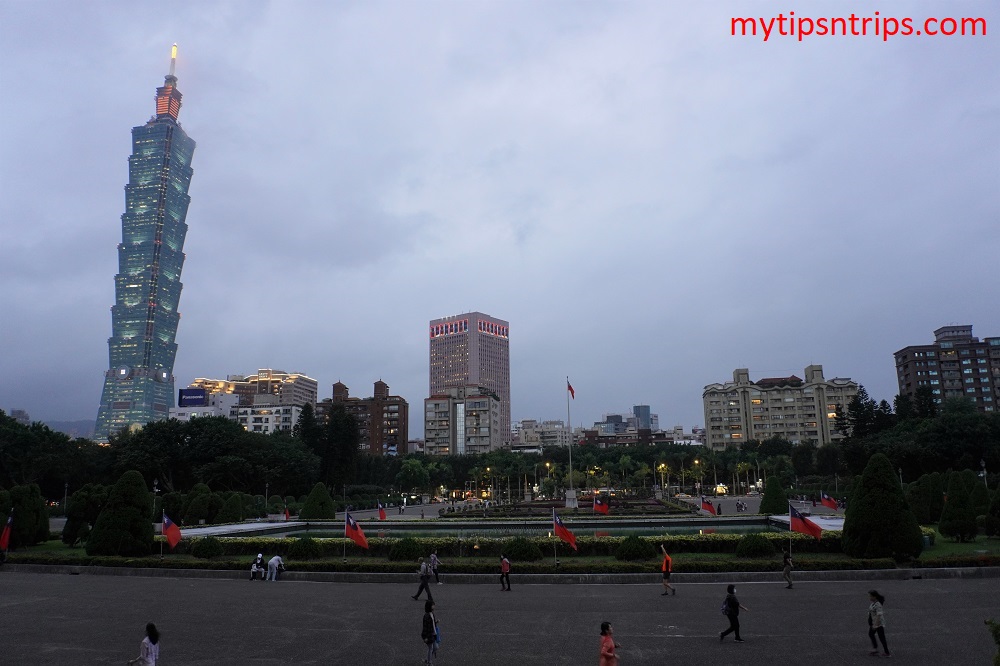
Seventh stop overlooking beautiful views of Taipei 101, and then go to Formosa Chang near Taipei 101 for dinner. The Taipei 101 formerly known as the Taipei World Financial Center, is a supertall skyscraper designed by C.Y. Lee & Partners in Xinyi, Taipei, Taiwan. This building was officially classified as the world’s tallest from its opening in 2004 until the 2010 completion of the Burj Khalifa in Dubai, United Arab Emirates. Its elevators, capable of 60.6 km/h used to transport passengers from the 5th to 89th floor in 37 seconds, set new records. In 2011 Taipei 101 received a Platinum rating under the LEED certification system to become the tallest and largest green building in the world. The structure regularly appears as an icon of Taipei in international media, and the Taipei 101 fireworks displays are a regular feature of New Year’s Eve broadcasts.
Day 7 Tamsui
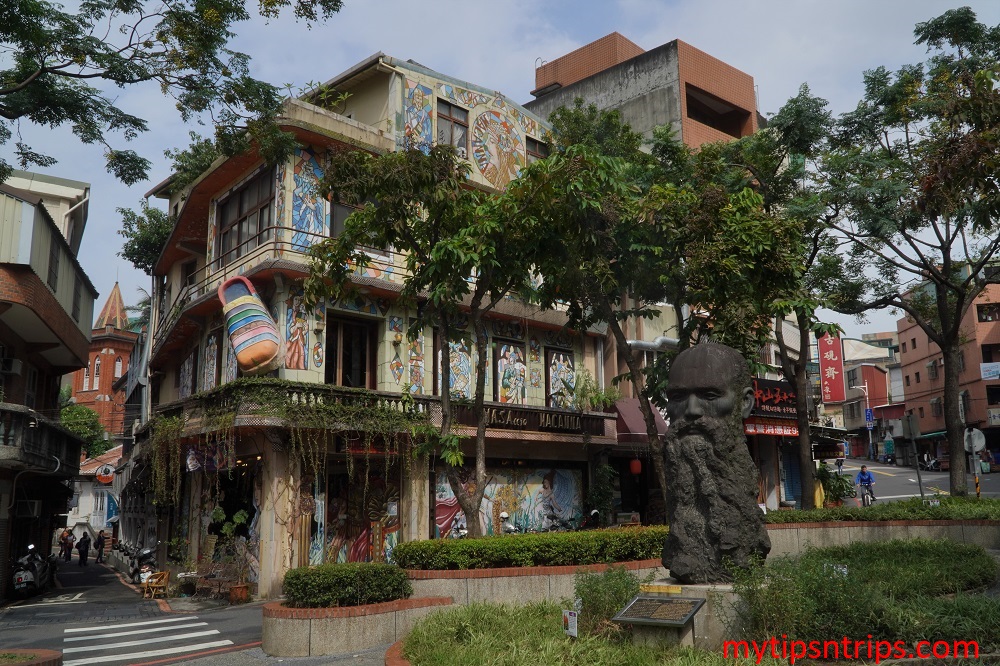
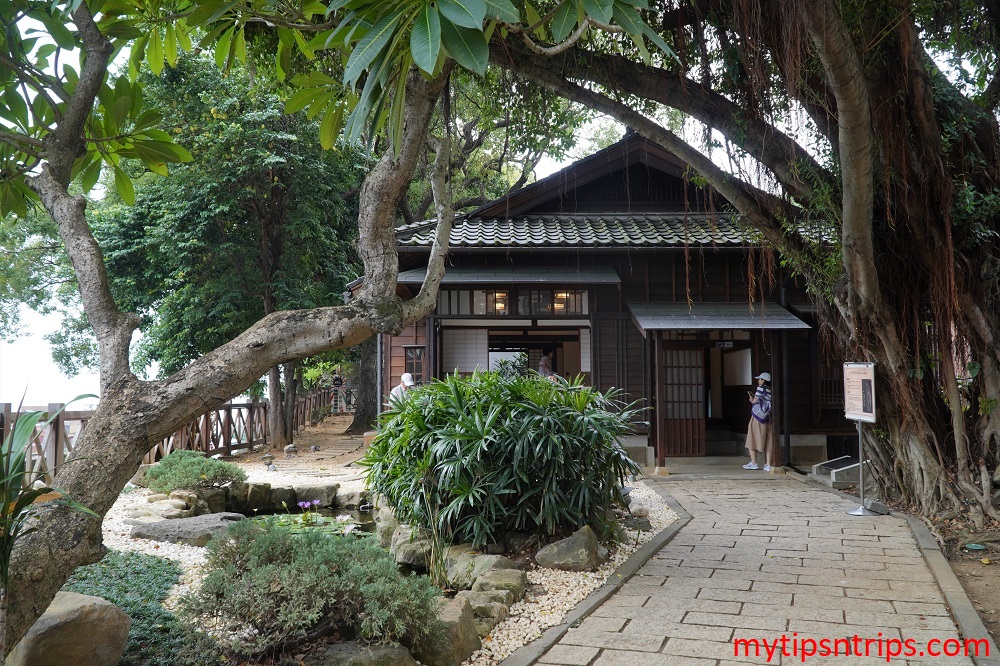
We took the Tamsui-Xinyi Line to the last stop Tamsui Station. After breakfast, we inadvertently entered the Qingshui Street Market, which is a historical lane selling vegetables, various meats, clothes, and seafood worth a visit.
We started our travel in Tamsui from “The Former Residence of Tamsui Township Head Tada Eikichi”, during the Japanese rule of Taiwan, many Japanese settled down in Taiwan to do business. Among them is Tada Eikichi, an entrepreneur who also had a passion for public affairs. Built in 1934, the Former Residence of Tamsui Township Head Tada Eikichi captures the authentic spirit of a Japanese-style wooden house. A stroll in this elegant house and its lovely garden overlooking Guanyin Mountain and Tamsui River will bring you peace of mind.

Next, we visit “Tamsui Customs Officer’s Residence”, also known as the Little White House has over a hundred years of history. It is named after the white western-style building exterior. The entire architecture is bathed in white with an orange rooftop which is eye-catching under the blue sky. With its domed corridor design, much romantic appeal is added to the Little White House. The Little White House used to be Tamsui’s Custom Inspector General’s residence in the Qing Dynasty. In 1862, as the port became prosperous and more foreigners were stationed here, more residences were built for foreign officials. The Little White House is an impressive piece of colonial architecture. The main building is a square structure with Spanish-style halls and 11 half arches. Every door and window uses wooden Persian blinds, and the interior takes in lots of light and air during the day. There is a patio facing Guanyin Mountain looking over the Tamsui riverbank, which makes for a very beautiful view. Ticket price of NT$80 per person including Fort San Domingo and Hobe Fort well worth the money.
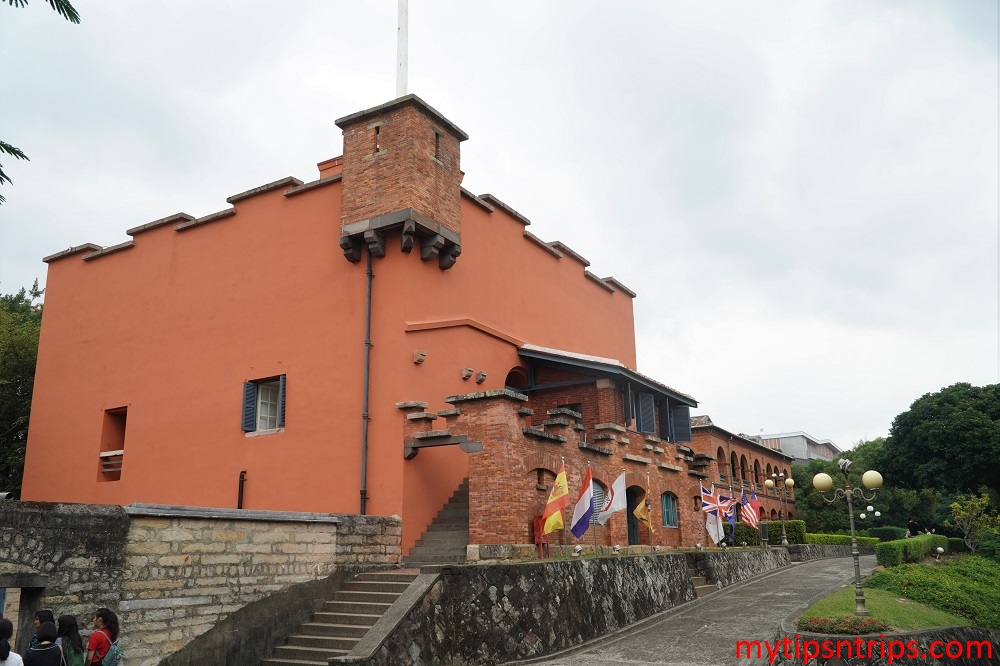

After the Little White House, we step back in time at Fort San Domingo, which is Tamsui’s most prominent monument to foreign involvement in Taiwan. First built in 1629 by the Spanish, Fort San Domingo was intended to aid the imposition of Spanish rule over the local Chinese and aboriginal populations in northern Taiwan. This fort was captured by the Dutch in 1642 when they drove the Spanish from the island. They replaced the Spanish-built stockade with a fort made of stone. The fort became known as the “Hongmao Castle” (Fort of the Red Heads) in reference to the colorful locks of its Dutch occupants. In 1867, the British leased the fort and undertook massive renovations, which included the construction of the imposing British Consulate in the eastern section of the fortress compound. Its red brick verandah and red roof tiles complement the color scheme and design of the fort. Hongmao Castle’s position overlooking the mouth of the Tamsui River makes it a particularly attractive scenic spot, especially at sunset.
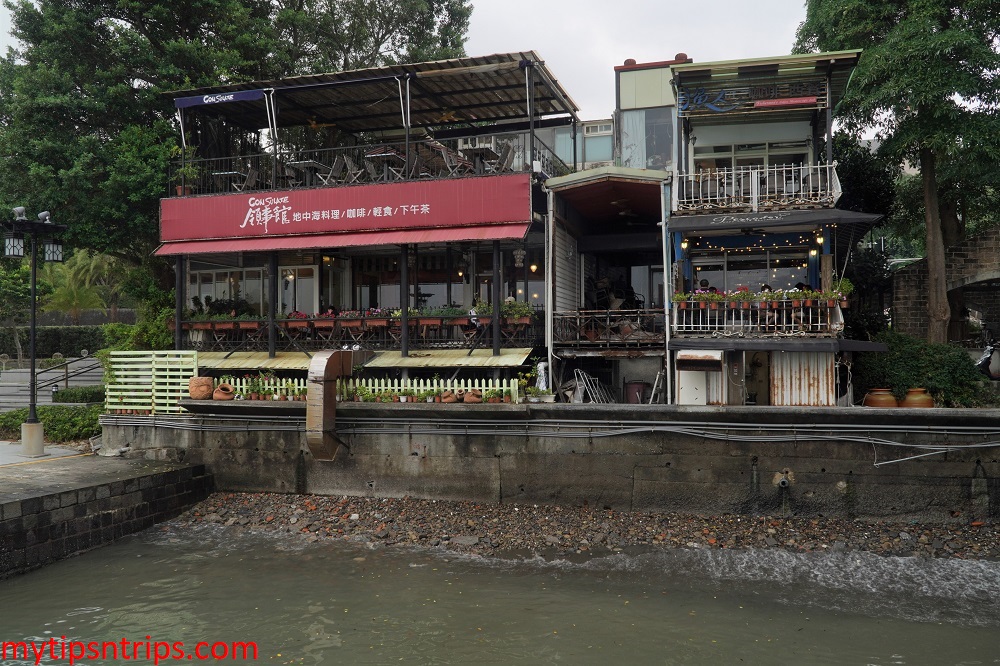
After Fort San Domingo, we Cross the road to The Customs Wharf, located on Zhongzheng Road was Taiwan’s very important port due to the Treaty of Tientsin signed in 1858 and the Convention of Peking signed in 1860, it had a critical position in the history of trading. At that time, the pier of the Port Corporation and the boathouse of the British Consulate were established here. The Chinese government designated a British named Li Tai-guo in Chinese (whose English name is Horatio N. Lay) to act as the “General Customs Commissioner.” The transfer of the customs administration to foreigners is important historical evidence proving the invasion of northern Taiwan by the powerful nations in the late Qing Dynasty. Inside the Tamsui Customs Wharf area, there are still customs-associated structures built in the Qing Dynasty and the Japanese Colonial Period, such as the main body of the wharf, a two-story western house, two warehouses, and the remains of other associated buildings, which are now city designated historical sites. Along the river bank, it’s clear to see the Tamsui Customs Wharf with a total length of 150 meters, the construction of the gravity bank wall covered with hard rocks over the surface, and a stone construction filled with gravel to prevent tidal erosion.

Stroll along the riverbank, we reached Hobe Fort, it was the first line of defense in Northern Taiwan during the Qing Dynasty. Although the fort was never involved in any battle, there was a battle between China and France in 1884 before the fort was built. The outer walls of the fort used to be the dorm and storage area for the soldiers. Now it is a space that displays the historical archive of the fort’s history along with old photos of Tamsui. Nearby is one of the eight top spots of Tamsui, the Song Tao Martyrs Shrine.
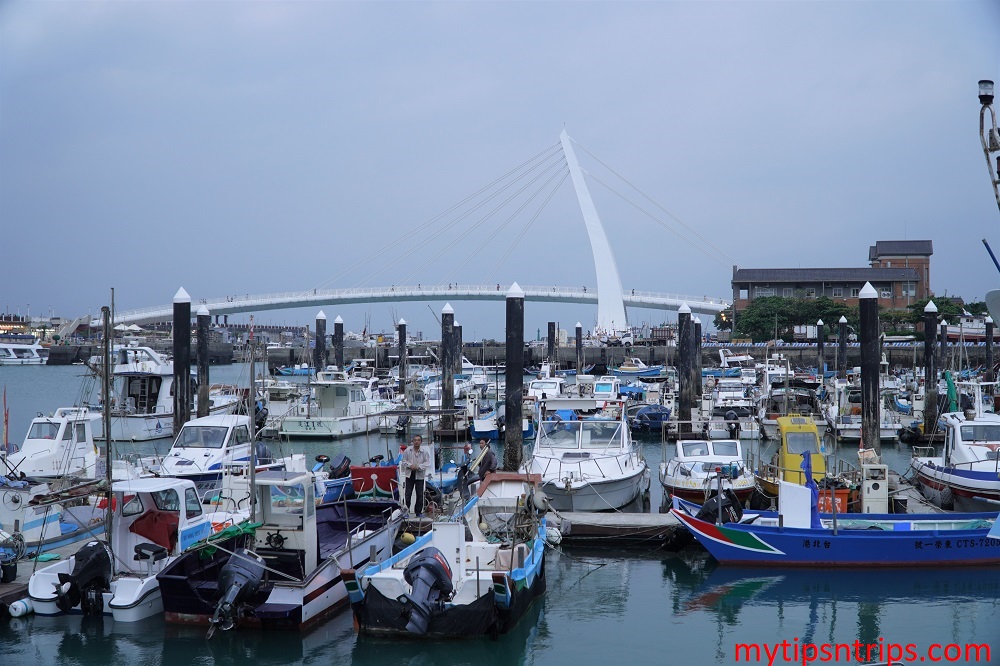
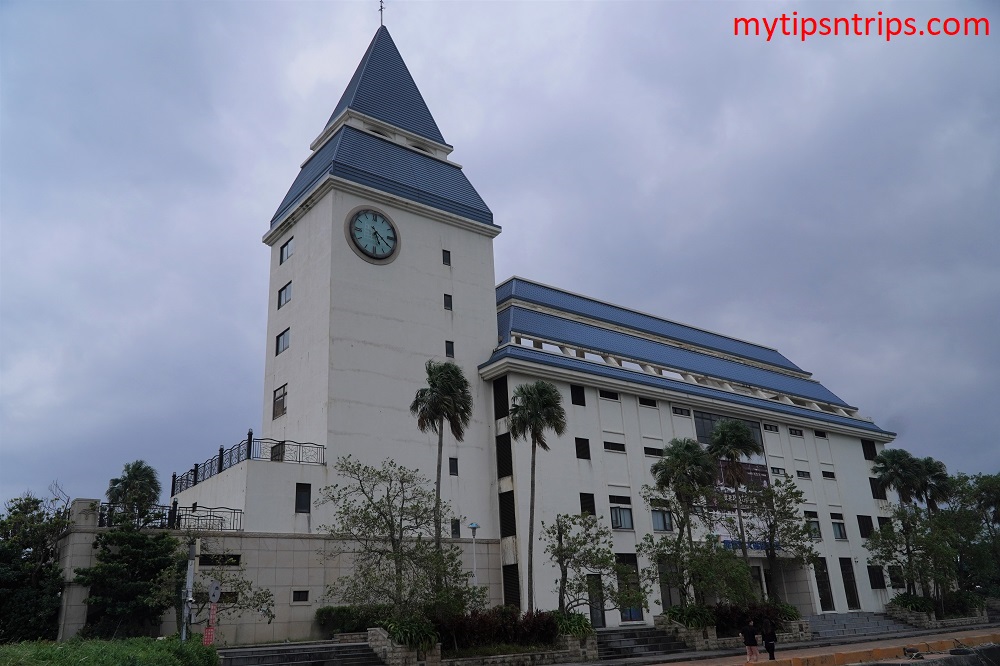
Then we took a bus from Hobe Fort to our Last stop Fisherman’s Wharf, once we arrive at Fisherman’s Wharf, we saw “Lovers’ Bridge” from far away. At one end of the bridge, a curved giant pointed arch thrusts from the water towards the sky. The white surface of the bridge constantly changes colors in the reflection of light. The bridge is a landmark of the Tamsui Fisherman’s Wharf. In the fish market, you can pick any freshly caught seafood which the owner will cook for you. The shopping street and art street are filled with all sorts of creative souvenirs. The boardwalk and riverside cafes are the best spots for couples. And as the sun sets, the beautiful gradation of colors in the sky puts a final touch to an unforgettable time in Tamsui. But we miss the sunsets due to bad weather.